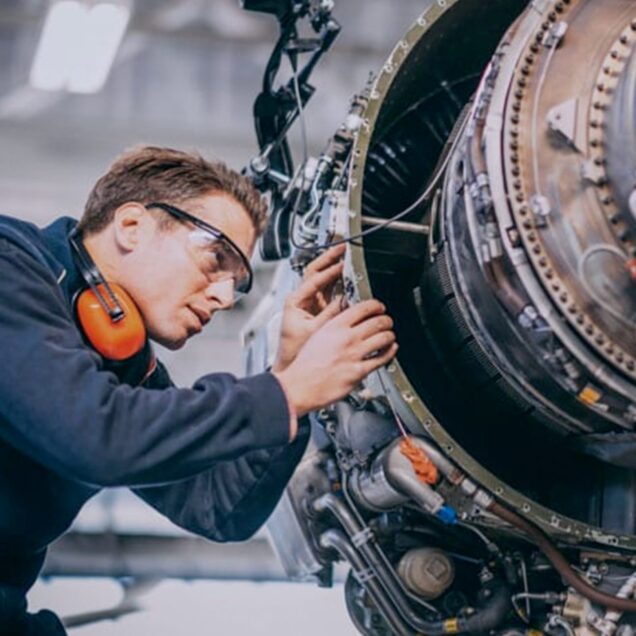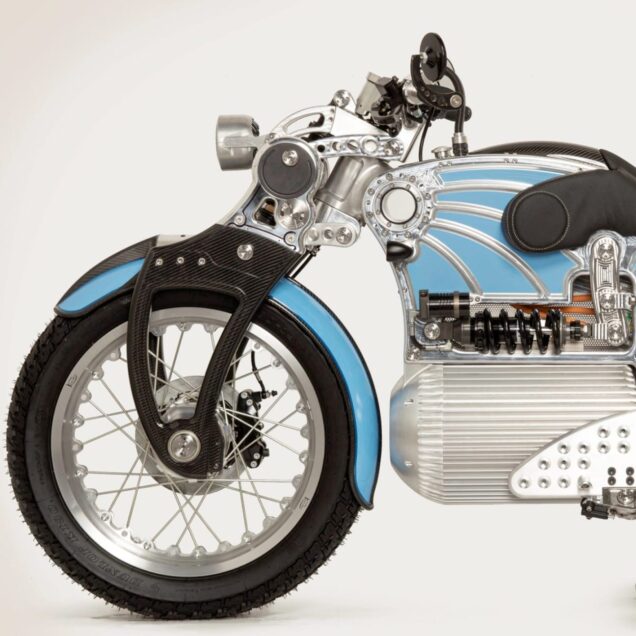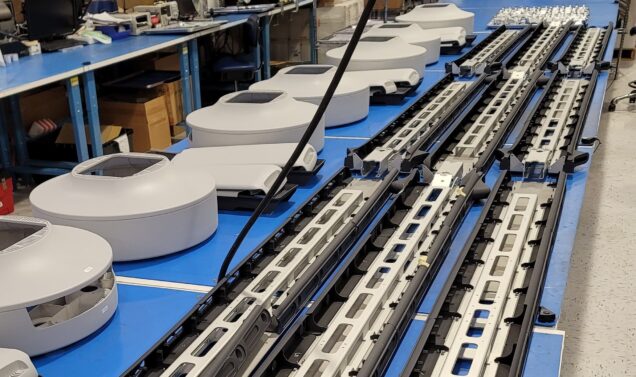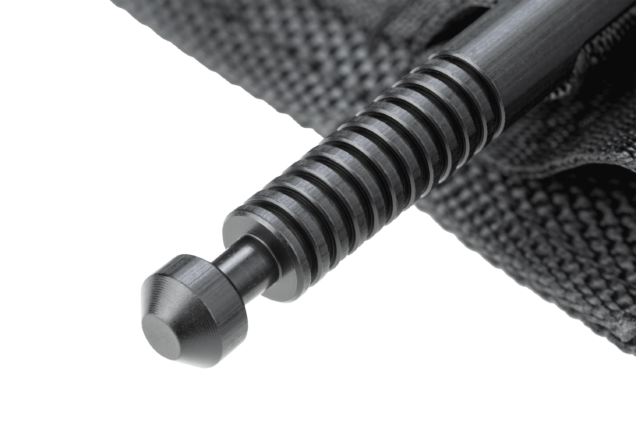Making emergency medical care possible
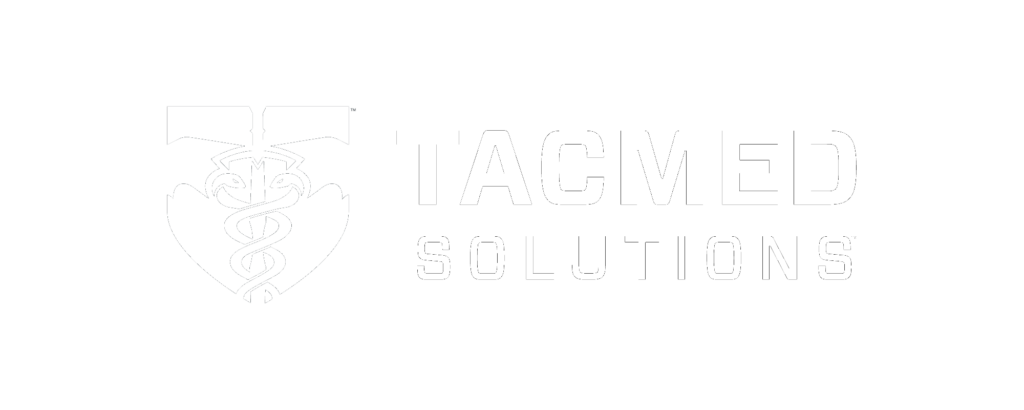
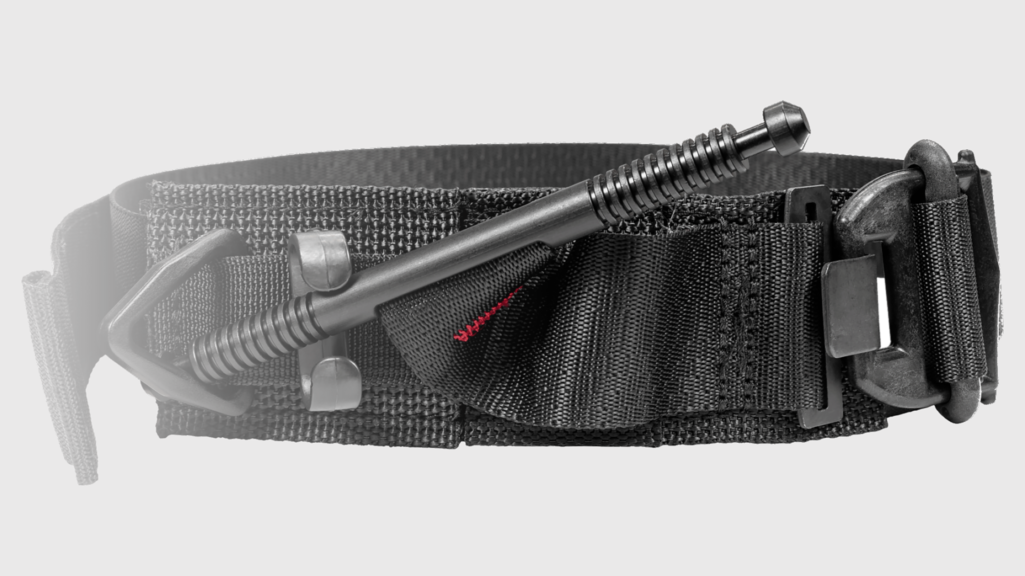
TacMed Solutions needed a manufacturing partner for critical parts due to rising order quantities and the war in Ukraine. With an agile supply chain and rapid turnaround, Fast Radius helped them increase production so that TacMed could fulfill demand and deliver tourniquets to Ukraine’s war effort.
The Challenge
Rapidly scaling production for emergency medical tools
TacMed, a leading medical equipment company focused on increasing survivability, found their existing production and supply chain was unable to keep up with growing demand for their SOF® Tourniquet. Fast Radius rapidly moved to production, enabling TacMed to distribute critical equipment.
TacMed first came to Fast Radius for CNC machining support to scale production of the aluminum handle on their SOF® Tourniquet because their existing manufacturer was unable to keep up. Fast Radius adapted manufacturing workflows to meet TacMed’s urgent requirements, developing specialized inspection plans and accelerating production to meet TacMed’s needs. This way, Fast Radius delivered 100,000 parts to TacMed in just 30 days, meeting their desired timeline while reducing costs.
When Russia attacked Ukraine, the global need surged for TacMed’s tourniquets, which soldiers and emergency responders carry to improve survivability in crisis situations. Shipments of TacMed’s SOF® Tourniquets have gone into the hands of Ukrainian forces, and while the company’s demand naturally skyrocketed from selling to allied partners supporting Ukraine, they also prioritized manufacturing tourniquets to donate to the war effort through Samaritan’s Purse, Afya, and the Ukrainian American Foundation.
In total, TacMed has provided more than 50,000 tourniquets to the Ukrainian war effort as of May 2022, with plans to grow that number into the hundreds of thousands in summer 2022 if needed. These ambitious plans require consistent manufacturing for high part volumes and a steady supply chain.
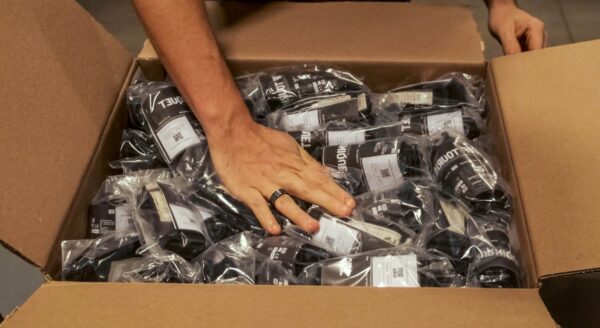
When the war in Ukraine started, we weren’t going to let supply chain issues get in our way. Having Fast Radius as a communicative, transparent manufacturing partner has helped us move quickly to jumpstart production and deliver lifesaving supplies to those on the front lines who need them most.

Making it possible
Building a reliable supply chain for lifesaving parts
1. Rapid ramp to production
Accelerated production was critical for TacMed, whose existing suppliers could not keep up with necessary production timelines. Fast Radius adjusted manufacturing processes, provided early part and post-processing samples, and delivered the first shipment of 100,000 parts within 30 days.
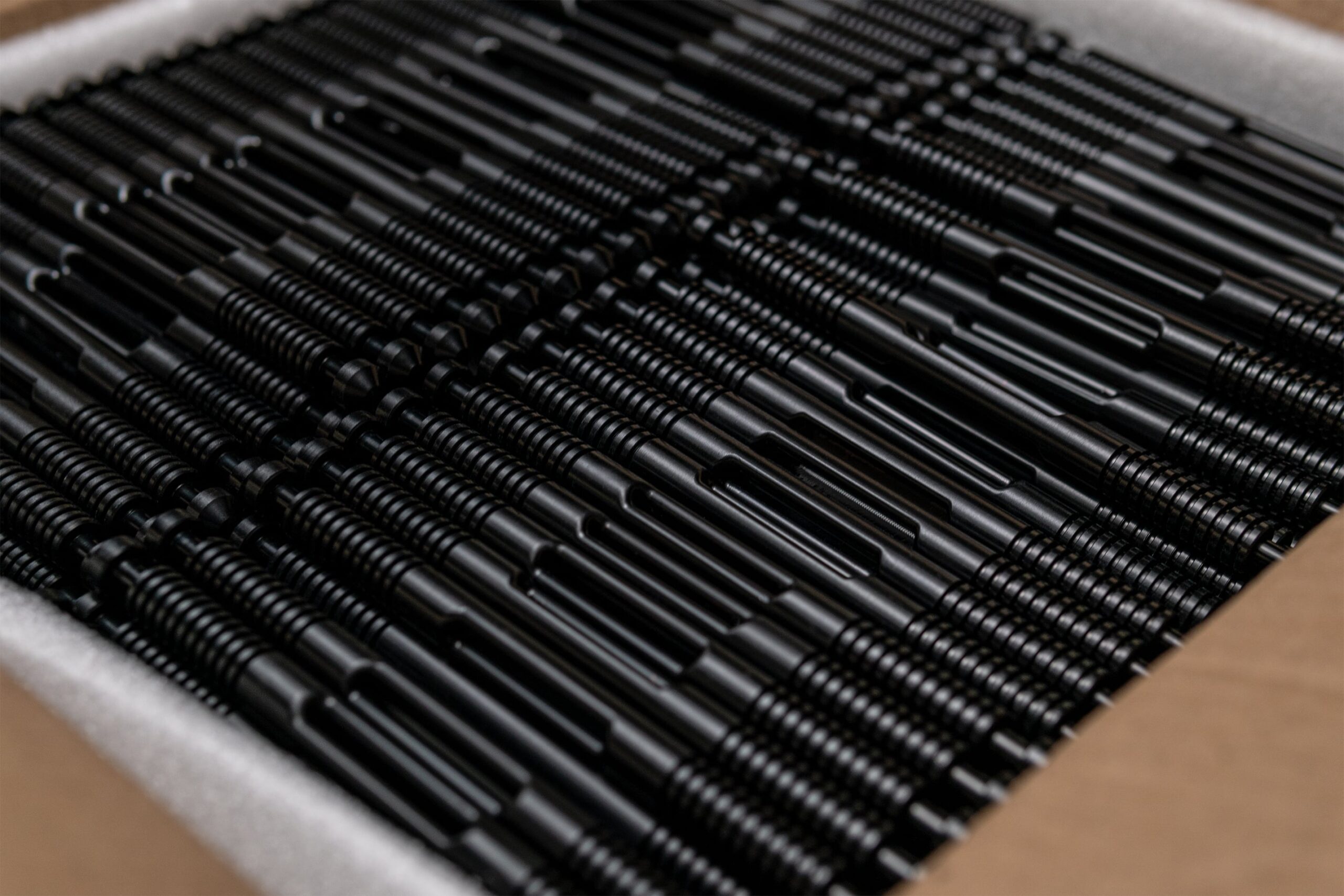
2. Close supplier relationships
Fast Radius’ global supplier network offers customers access to preferred pricing and fast lead times. Fast Radius’ strong, established supplier relationship allowed for negotiation of a more competitive price for TacMed’s parts.
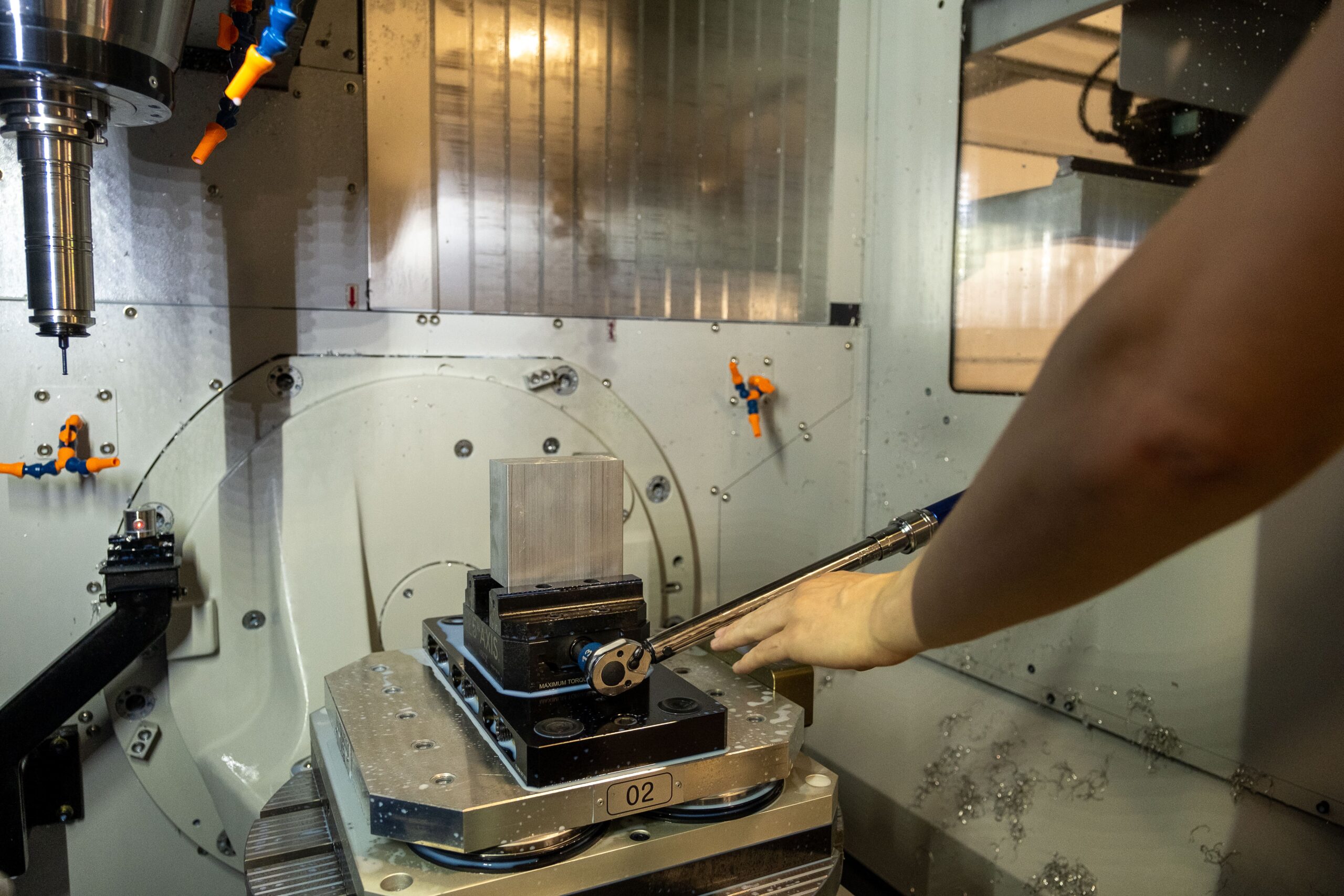
3. Dedicated supply chain team
With global supply chains in disarray, dedicated logistics support is critical. Fast Radius’ internal supply chain team vetted suppliers, ensured parts were shipped on time, and led the import process to deliver the parts TacMed needed, when they needed them.
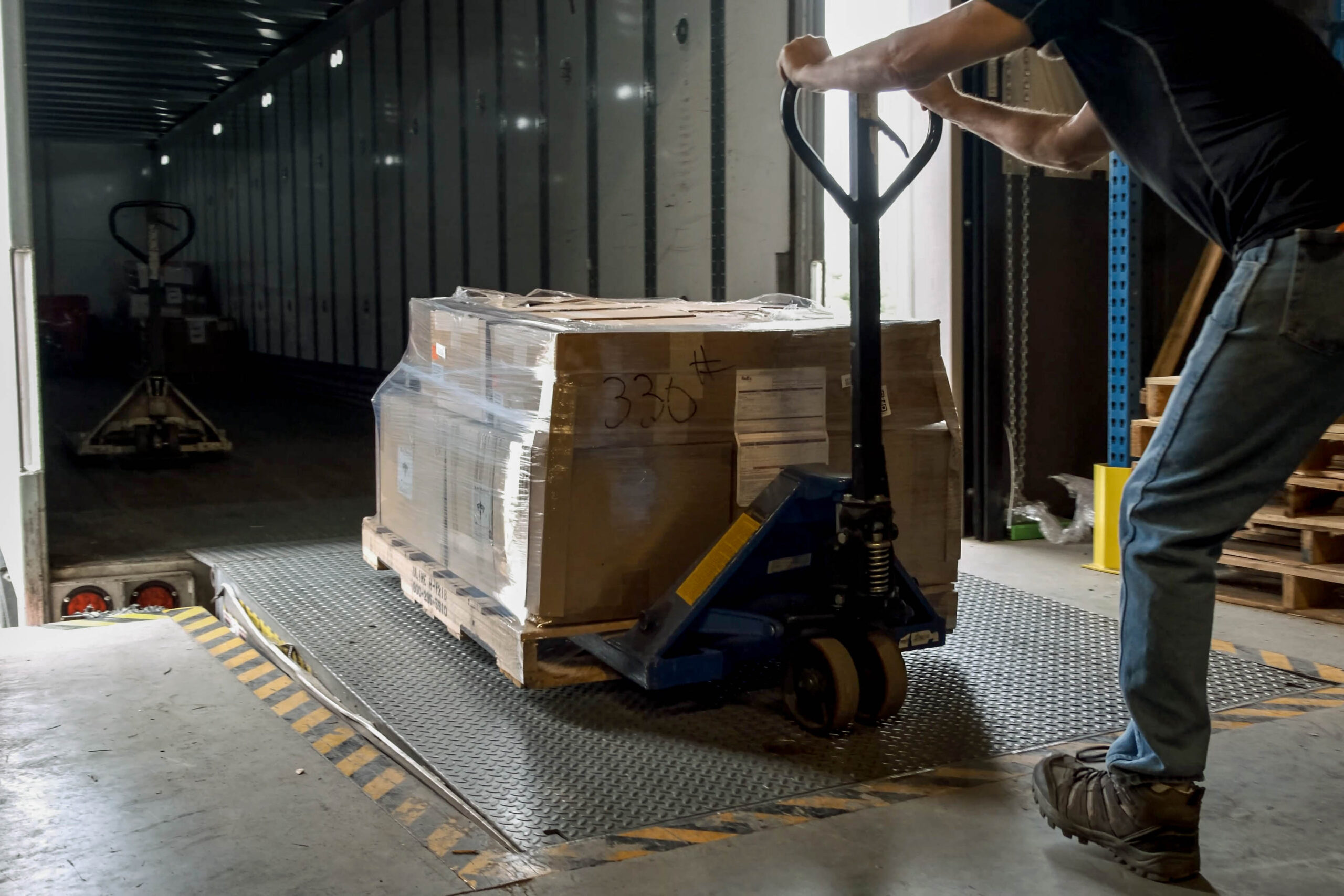
4. Agile inspection plans
The CNC machined tourniquet handle requires a mixture of 2-axis lathe and 4-axis milling to manufacture and includes tight tolerances that require precision. Fast Radius customized the first article inspection process, starting with electronic delivery, to ensure quality while fulfilling TacMed’s needs.
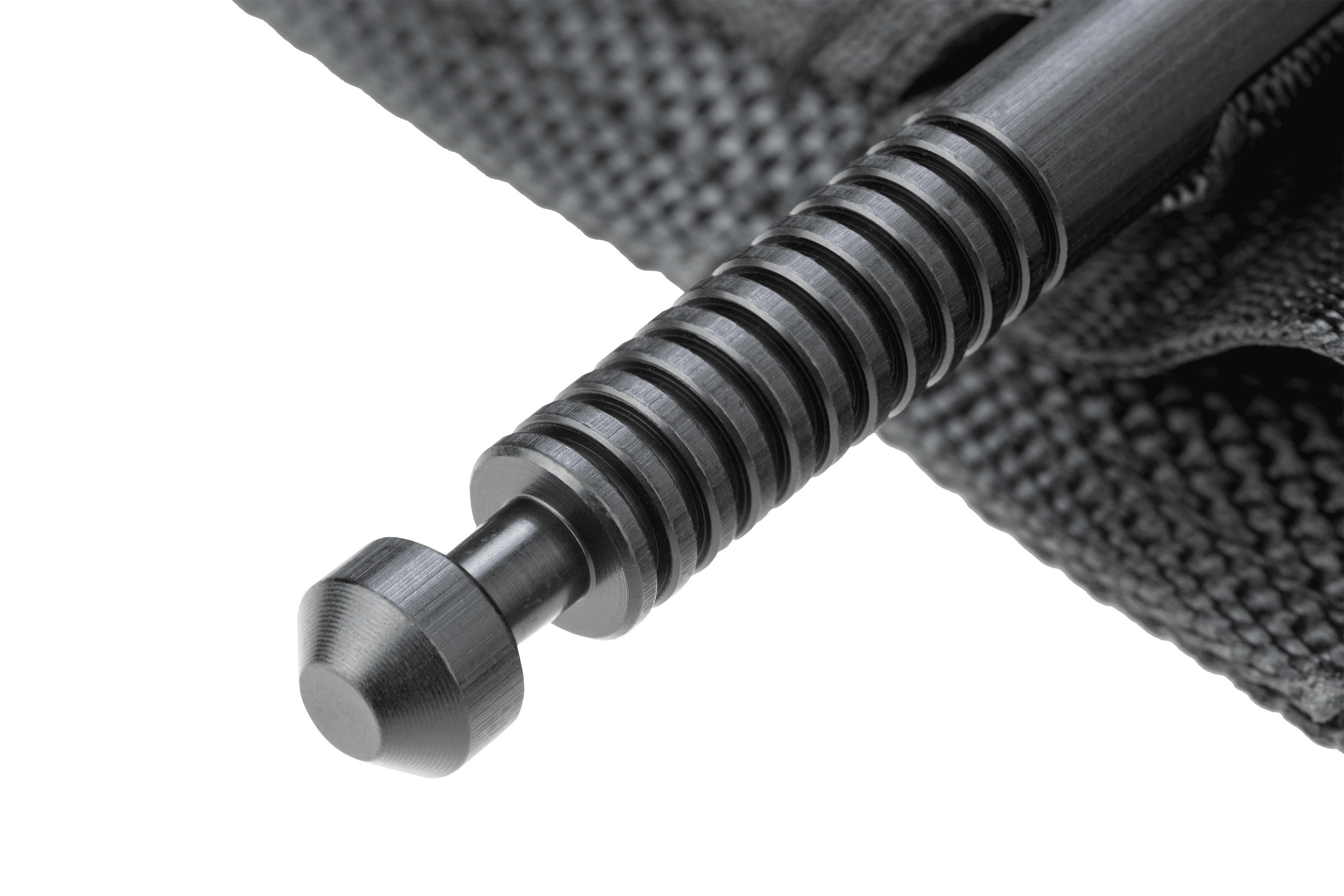
Gallery
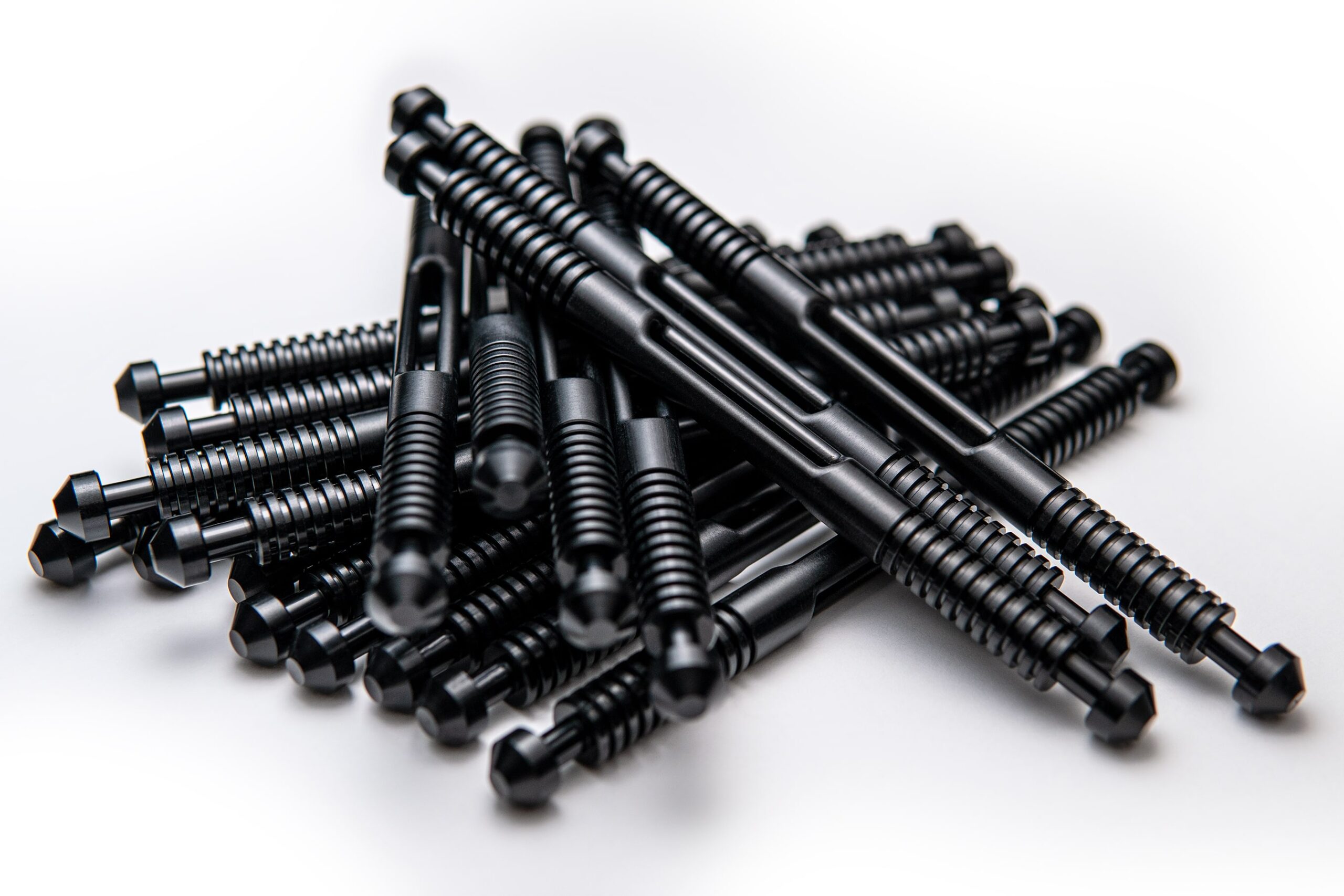
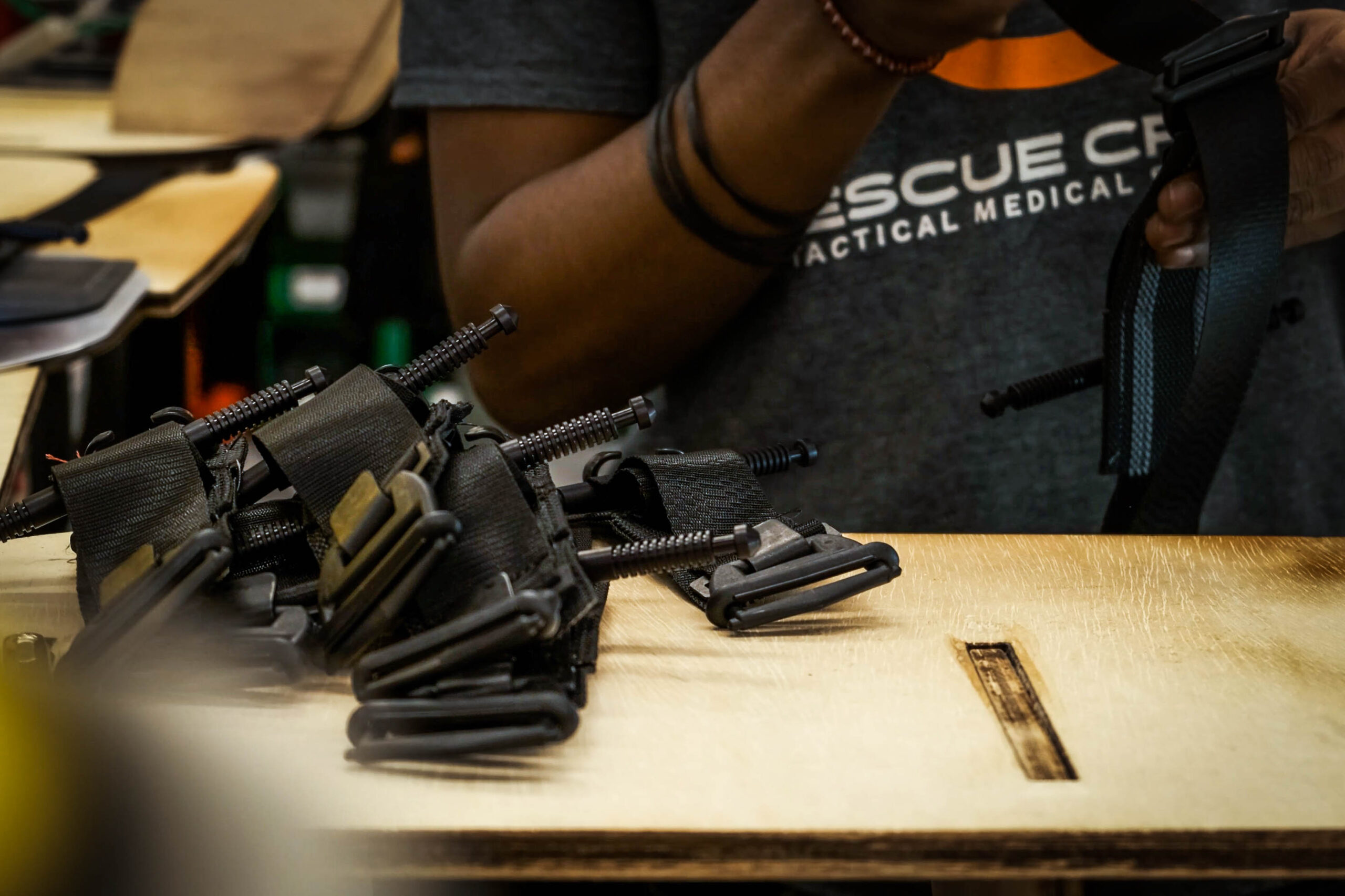
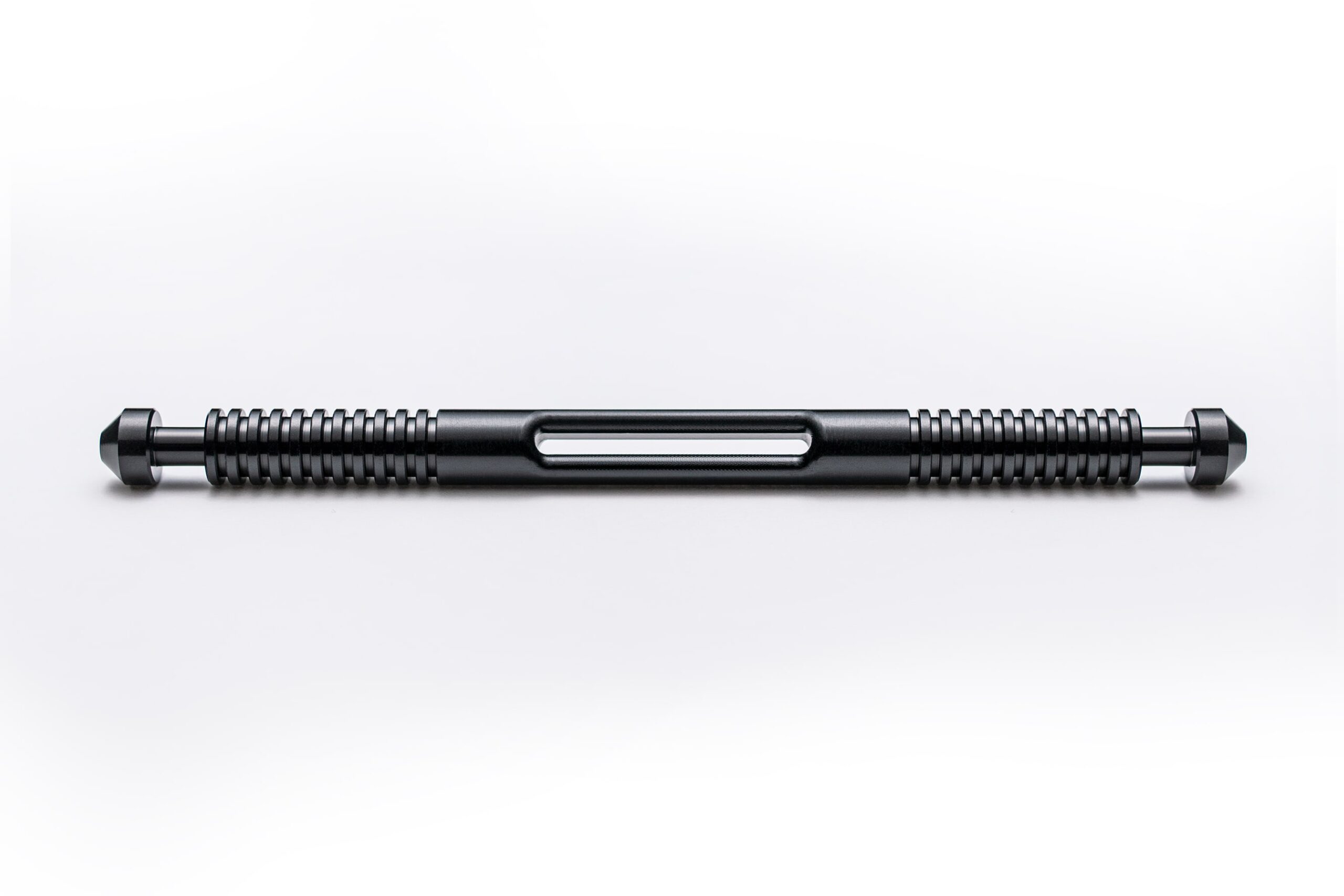
the results
Scaled machining on an accelerated timeline
30
days
From first purchase order to fulfillment
175,000+
parts
Manufactured in a 6-week timeframe
50,000+
tourniquets
Delivered by TacMed to the Ukrainian war effort
Ready to make your parts with Fast Radius?
Making point-of-care diagnostics possible
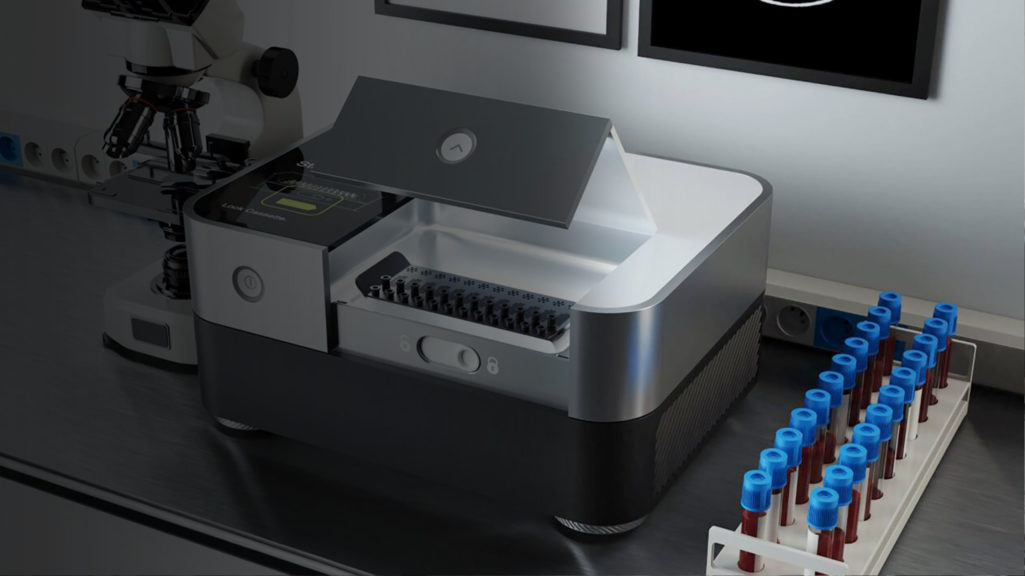
To meet the demand for point-of-care (POC) COVID-19 testing, a team from Fast Radius and the University of Illinois used additive manufacturing to create a validated, design-patented prototype of a microfluidic diagnostic in a matter of weeks, saving years of development time compared to traditionally-made biomedical diagnostics.
The challenge
Compressing a years-long product development cycle into weeks
COVID-19 tests are critical to the reopening of businesses and public spaces across the United States, but hospitals and lab facilities don’t have the capacity to handle the millions of tests needed every day.
To fill the gap, companies are scrambling to produce fast, accurate, point-of-care (POC) diagnostics that don’t need to be processed by skilled technicians.
Microfluidic “lab on a chip” technology seems like a good candidate for portable, easy to use POC COVID-19 testing, but these diagnostics usually take many years to develop, and the microfluidic cartridges are prohibitively difficult and costly to manufacture.
Two years before the pandemic, researchers at Fast Radius and the University of Illinois realized that making microfluidic cartridges with additive manufacturing could dramatically accelerate diagnostics R&D and also save time and money in production.
Once the coronavirus pandemic hit, the team quickly shifted focus to COVID-19 testing, producing a functional lab test in just five weeks.
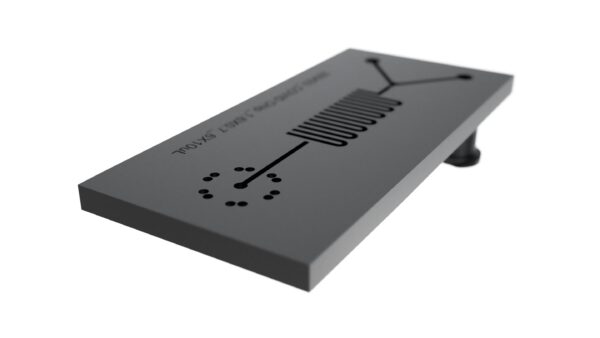
Additive manufacturing allowed us to make significant progress with microfluidic diagnostics very quickly to address the need for POC testing. Our microfluidic cartridge is ready for additive production after only five weeks of development.
making it possible
Fast, flexible product development
1. Sophisticated technology and materials
Fast Radius has the advanced technology and materials expertise needed to make sensitive medical diagnostics. We were able to carefully control the manufacturing process to achieve the high resolution and tolerances required for microfluidic devices. Further, we made the devices with a polyurethane that has the chemical stability necessary to conduct diagnostic chemistry with precision.
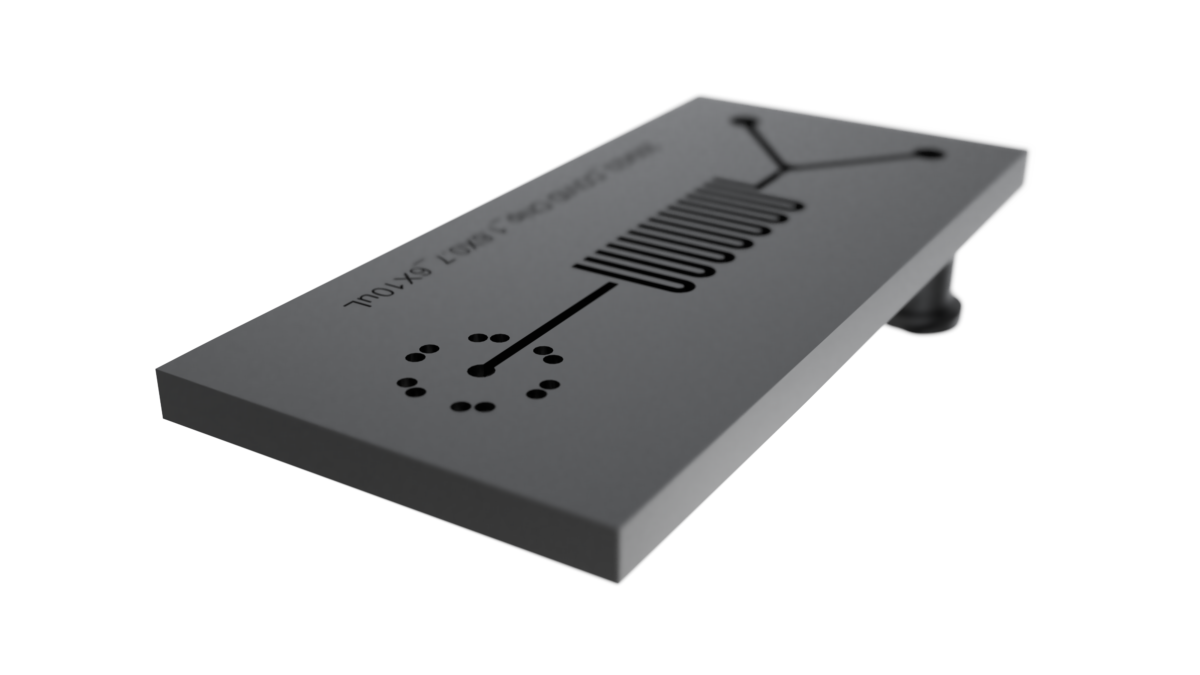
2. Design flexibility and improved functionality
We designed the microfluidic cartridge so that the test sample and other chemicals can be loaded onto the device more easily than other cartridges on the market. Injection molding only allows for mixing channels to sit on the surface of the cartridge, but additive manufacturing enabled us to add an internal serpentine channel that allows fluid to move from the front to the back of the chip, resulting in better mixing performance than a 2D serpentine chip at less than half the size.
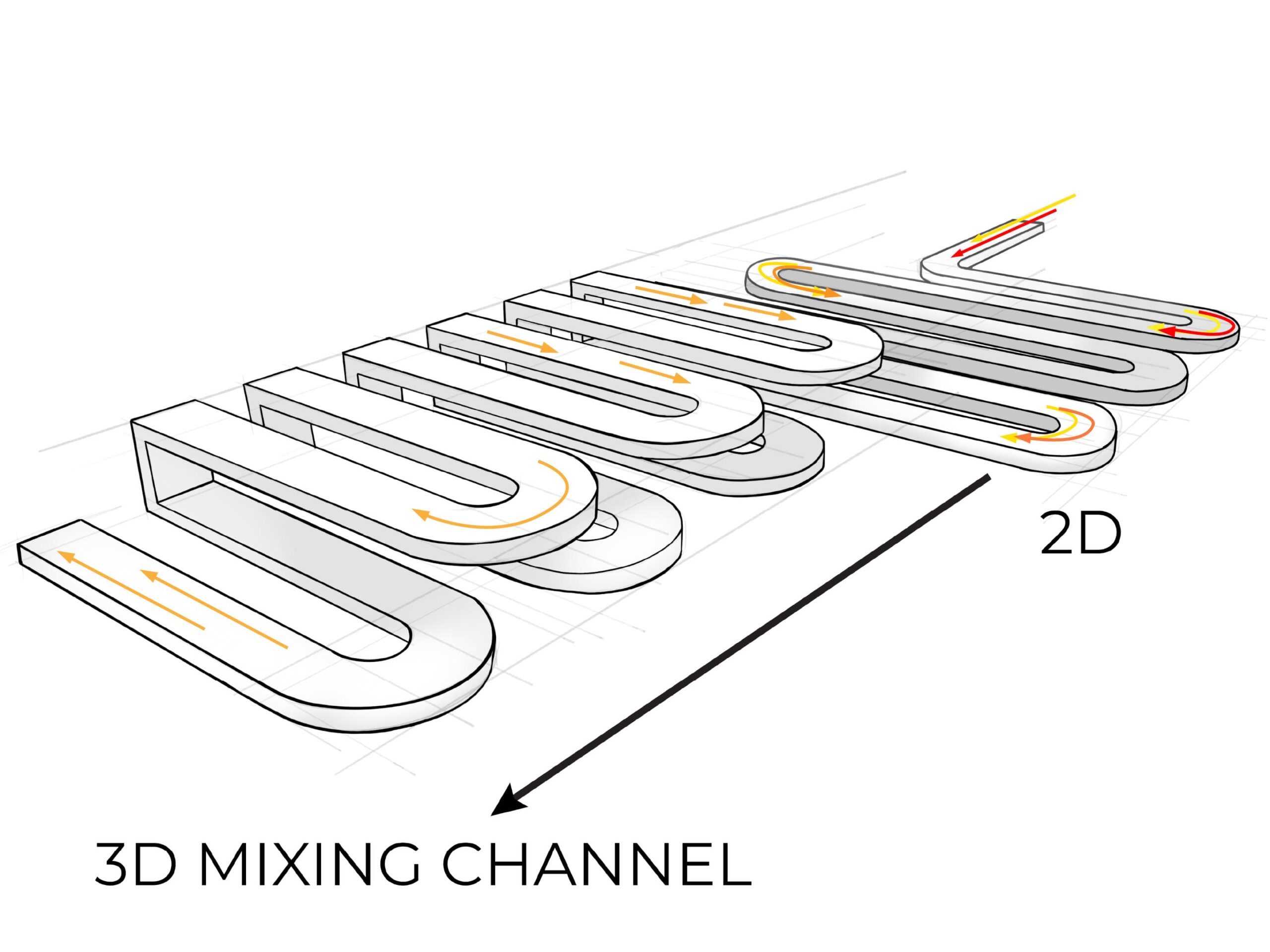
3. Rapid product development
Microfluidic diagnostics devices can take years to get to market because manufacturing the tiny cartridges is a painstaking process. The patented, additively manufactured microfluidics device from Fast Radius was designed and validated in only five weeks. Engineers worked to design, print, and test around 10 iterations of the diagnostic in four 24-hour cycles, with no need to design and test costly tooling.
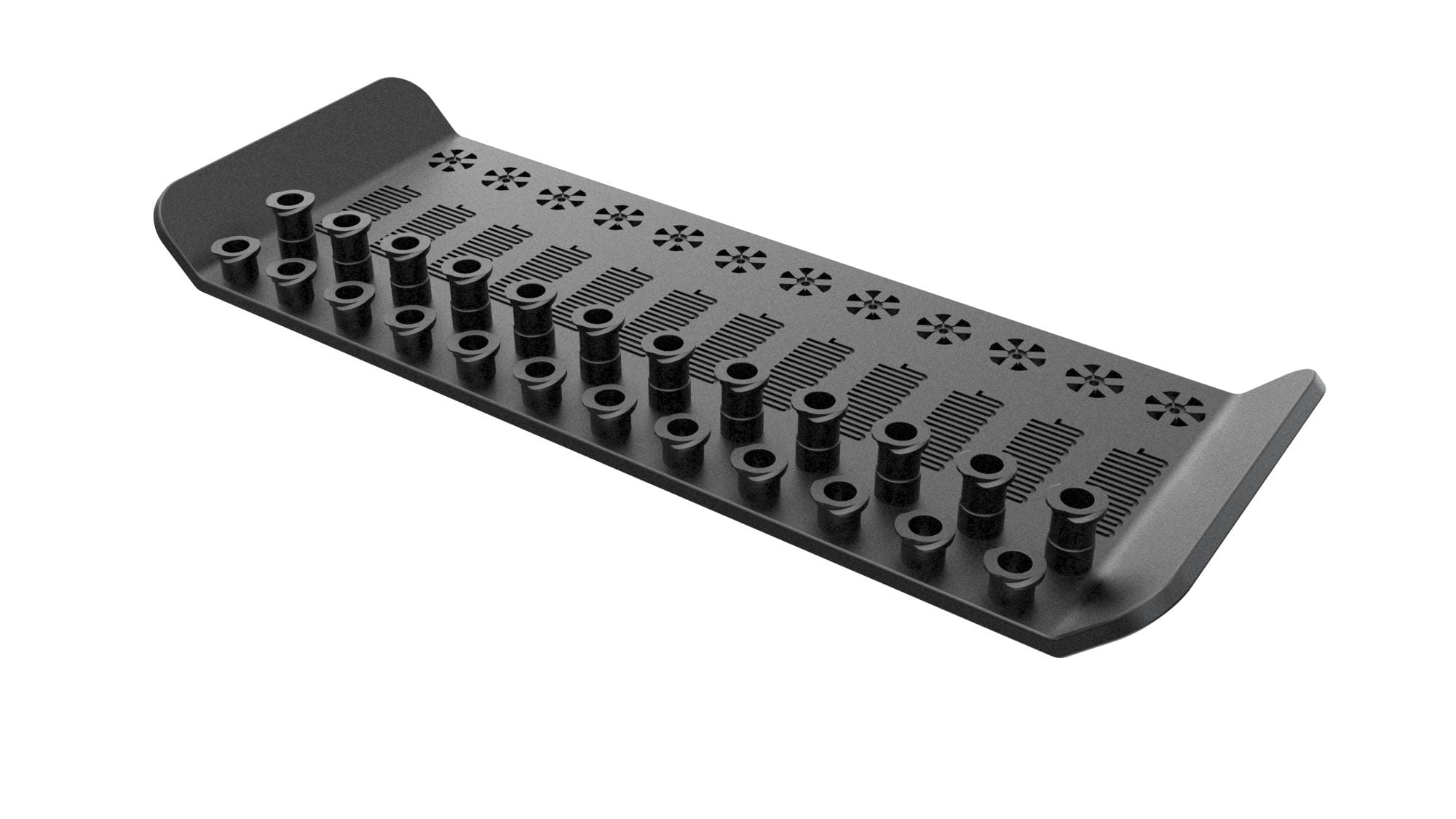
4. Production-ready cost savings
Unlike a traditionally made microfluidic cartridge, the test device we manufactured can go into production with no further changes to its materials or design. Since it doesn’t require the steep upfront expenditure on micro injection molding tooling, making a diagnostic with the process we developed could save companies millions of dollars over injection molding.
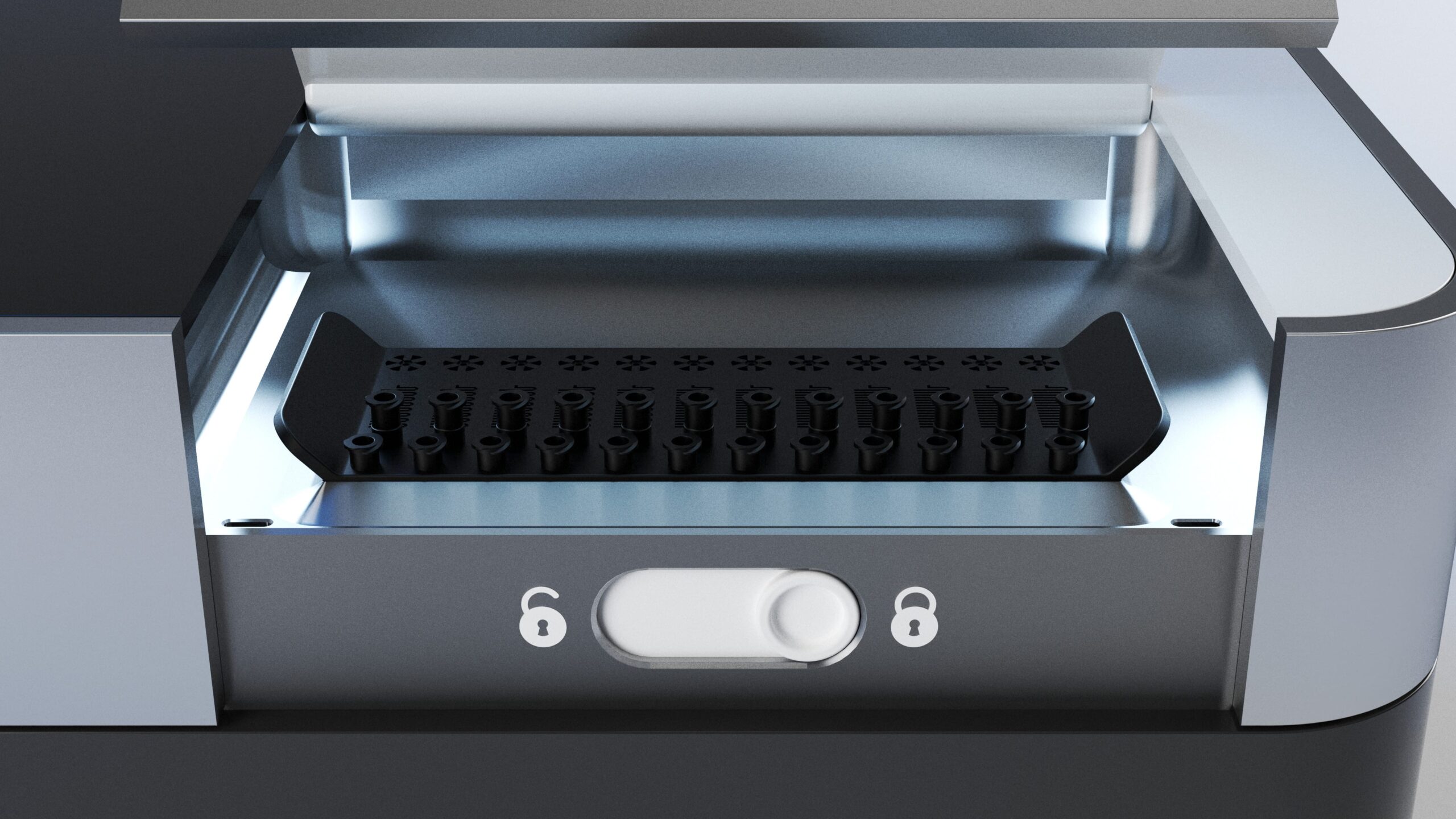
Gallery
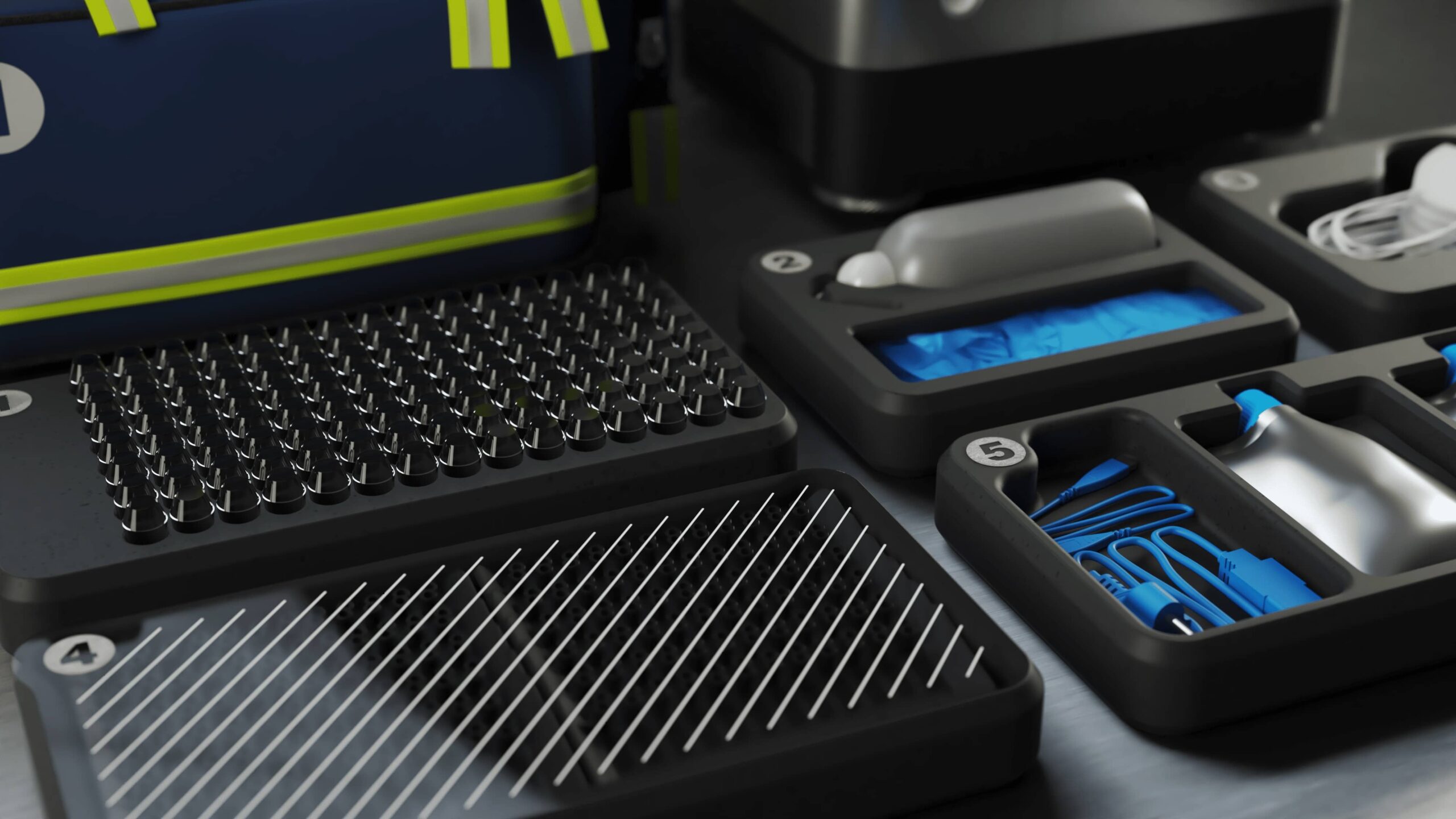

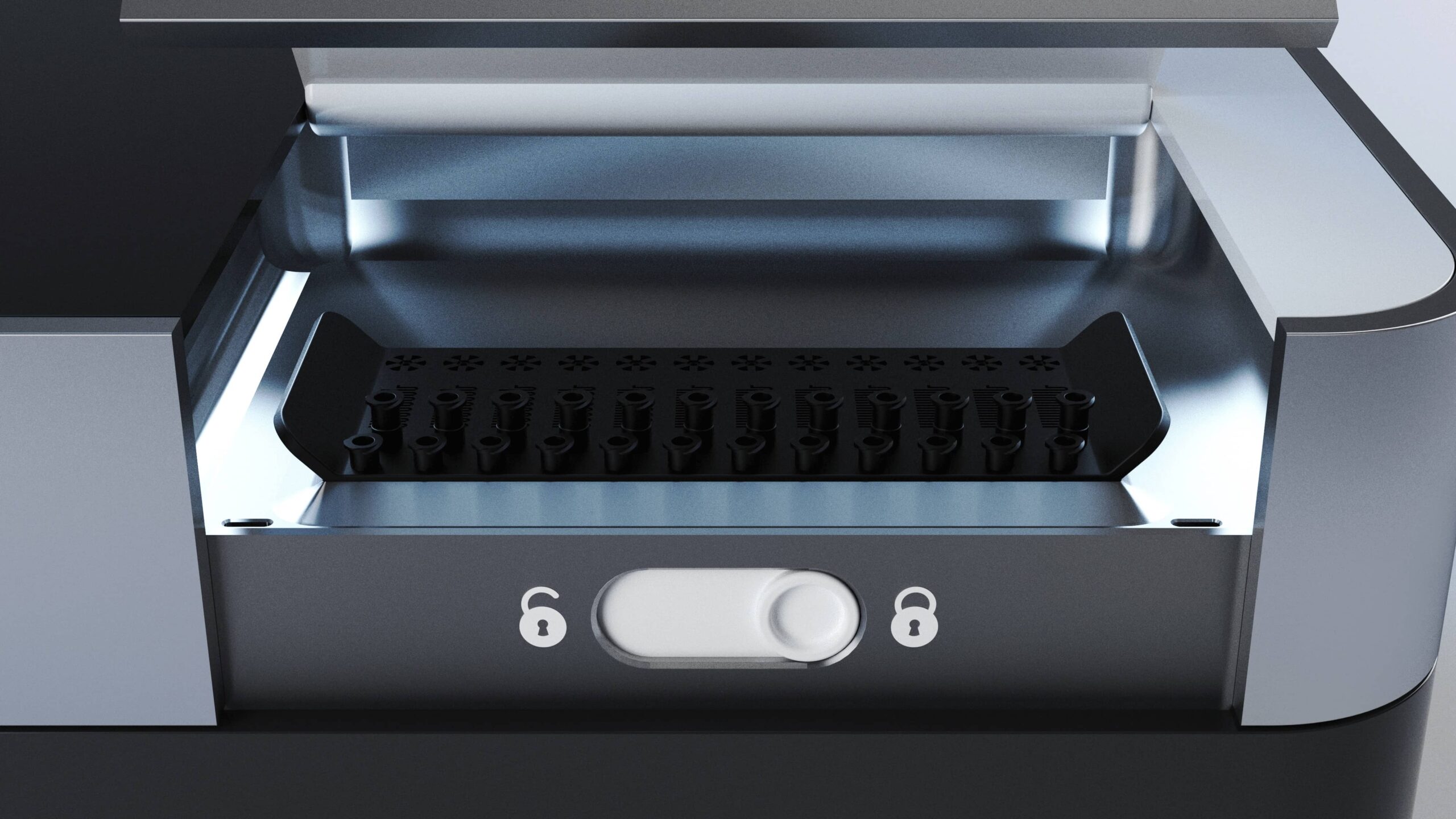
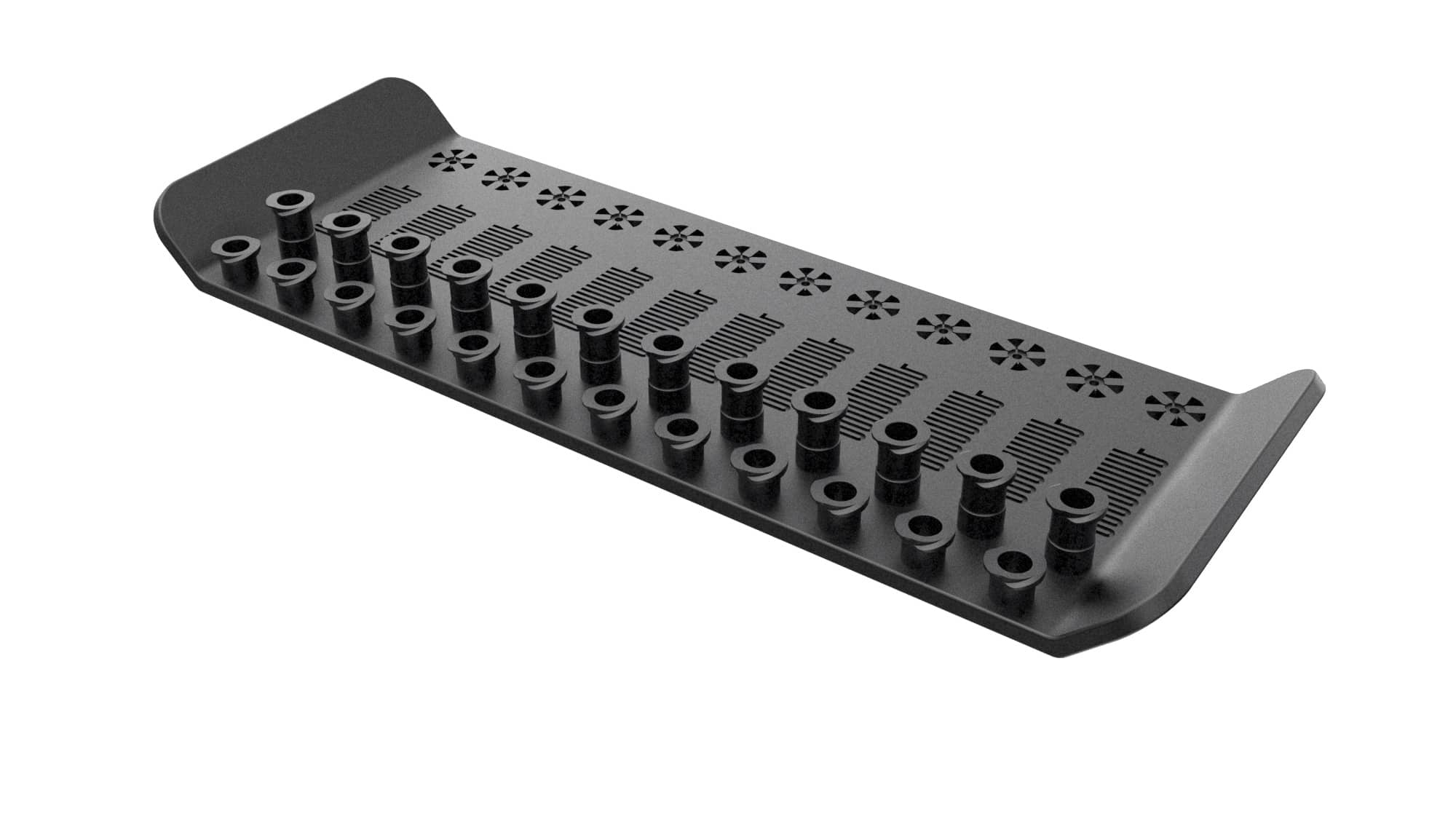
the results
Quicker, more efficient point of care diagnostics made possible with additive manufacturing
2x
Smaller than a 2D cartridge
5 weeks
From idea to working diagnostic
10 designs
Tested over four 24-hour design, test, print cycles
Ready to make your parts with Fast Radius?
Making safer working conditions possible
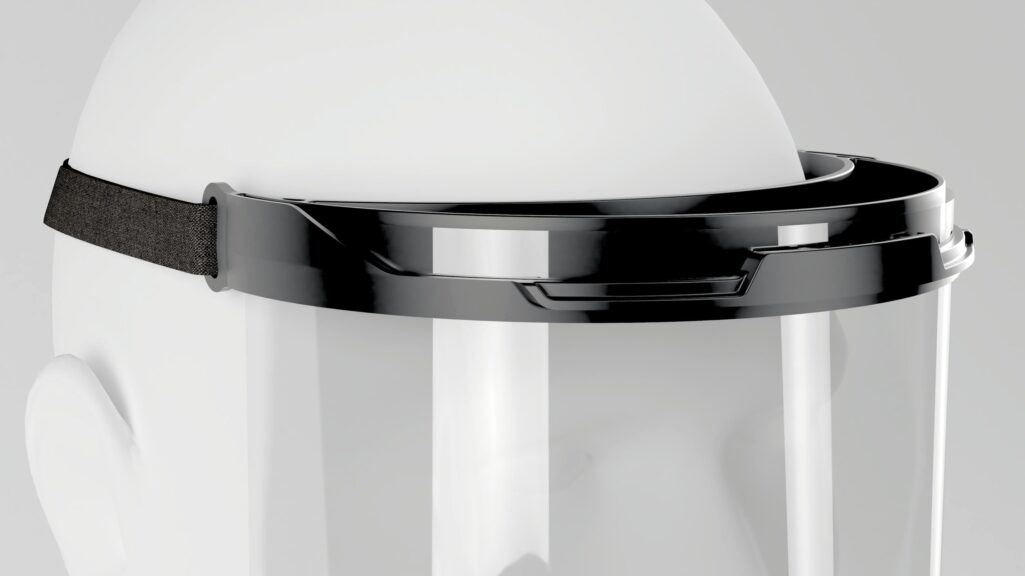
To help people get back to work quickly and safely during the coronavirus pandemic, our team at Fast Radius made a durable, reusable face shield with additive manufacturing. But when demand greatly increased, we knew we needed to shift production to injection molding. Here’s how we did it.
The challenge
Making a high-quality face shield more accessible
We needed to quickly ramp up production of a successful product to meet the urgency of a global health crisis.
When the COVID-19 pandemic hit the United States, our team at Fast Radius quickly pivoted a portion of our additive manufacturing capabilities to producing face shields to protect frontline workers. The shields are durable, reusable, and easy to assemble, but demand for the shields outpaced our ability to make them using additive manufacturing.
Wanting to get more shields to the essential workers who needed them, we decided to transition production from additive to injection molding. To do this, we needed to adapt the design for injection molding and stand up tooling quickly to meet the urgent demand for face shields.
Fortunately, our expert engineering and supply chain teams were up to the task.
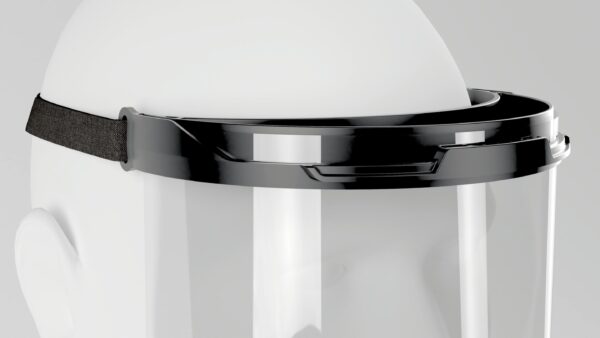
We transition from additive production to injection molding with our customers all the time, so we knew exactly how to approach design, manufacturing, and fulfillment to get our face shield to market quickly.

making it possible
Expert product development and logistics
1. Design for manufacturing expertise
We had to make significant modifications to the additive shield “halo” (or headband) to make it suitable for injection molding while maintaining its high performance. In just two days, our engineers ran 16 simulations, adjusting the design to improve performance each time. The resulting concept designs preserved the physical properties of the additive shield while avoiding poor tool conditions. We used HP Multi Jet Fusion (MJF) to print three of the concept designs and tested them for comfort and ease of assembly. After making a few adjustments based on those prototypes, we finalized the design for the tool that we used to injection mold the halo. The entire design and prototyping process for the tool took only three days.
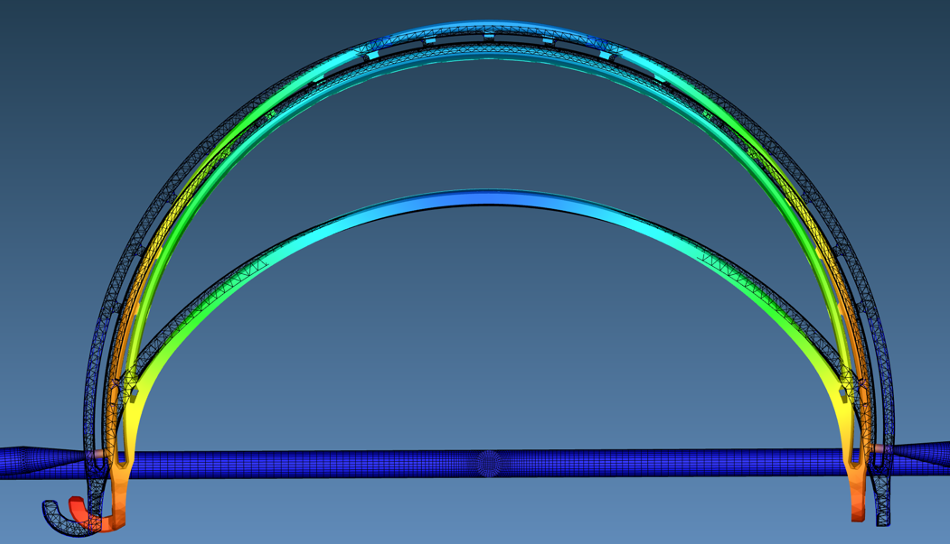
2. Vast production and logistics network
We work with injection molding shops all over the world, and in this case, we determined that a US-based shop would allow us to get to market fastest. While we made the halos locally, we sourced the clear plastic barriers for the shields overseas. Our strategic partnership with UPS ensures that those pieces will get to our operations team quickly for assembly and packaging. To further expedite fulfillment, we established two workflows — fulfilling small orders through Amazon and shipping larger enterprise orders with UPS, directly from our Chicago factory. This approach allows us to get face shields to customers quickly so they can go back to work feeling protected.
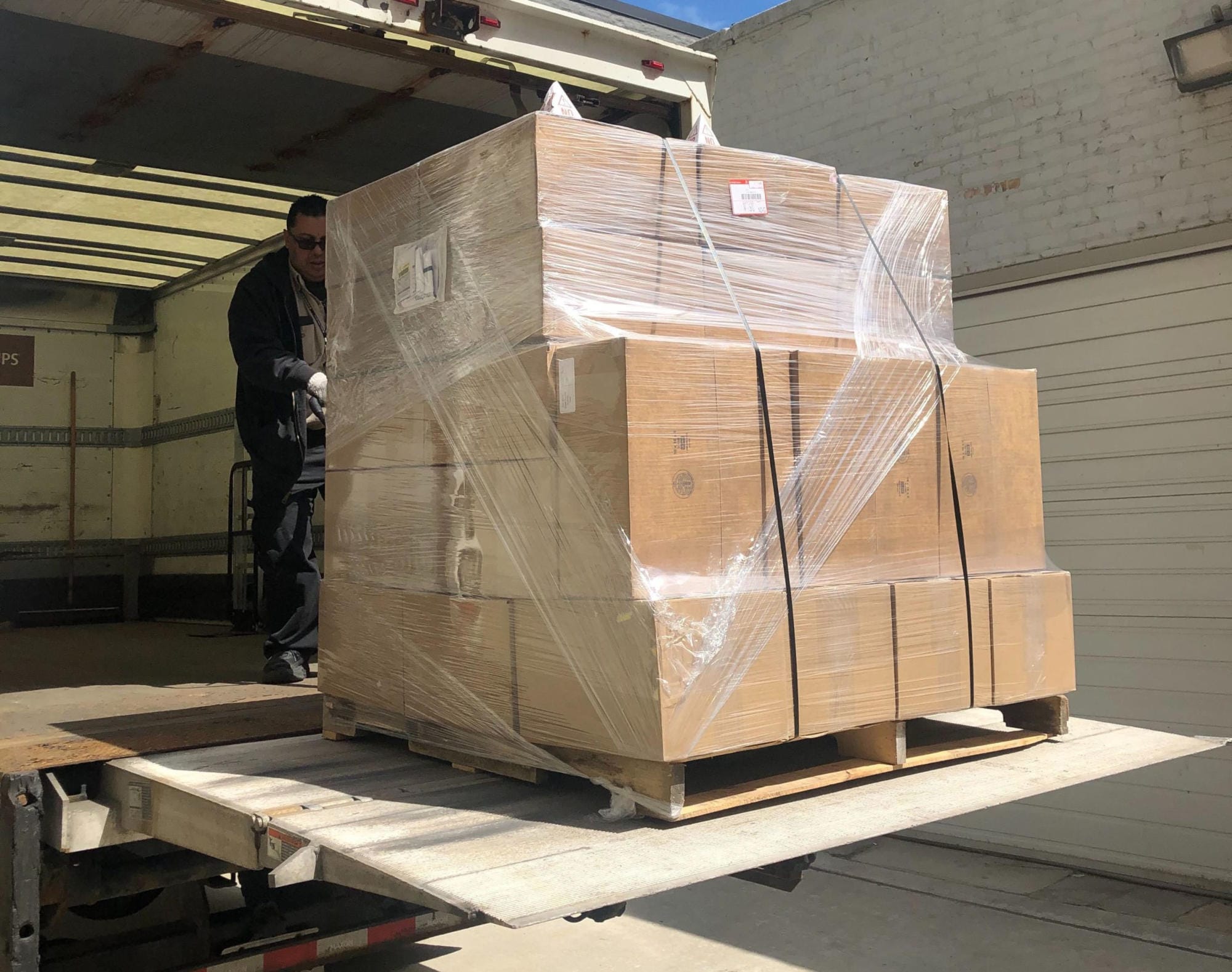
3. Production capacity and cost savings
Switching production from additive manufacturing to injection molding allows us to produce nearly eight times as many face shield halos per day. While printing an MJF halo takes approximately 16 hours (not including cooling and post-processing), we can produce two finished halos every 36 seconds with injection molding. Our cost to manufacture the shields also fell considerably, allowing us to reduce the price of the shield by 55 percent. By shifting production from additive manufacturing to injection molding, we can now offer high-quality reusable face shields to more people at a lower cost.

4. Additive manufacturing as a bridge to tooling
We continued to 3D print the halos as we worked to get our injection molding tool up and running, so there was never a disruption in supply to frontline workers. Using additive manufacturing as a bridge to tooling is one of our specialties. Our engineers have extensive experience guiding customers through the process of designing additive products from the ground up and then adapting them for higher-volume production. We can also help adapt a traditionally-made product for additive production to meet temporary spikes in demand or provide end-of-life inventory support.
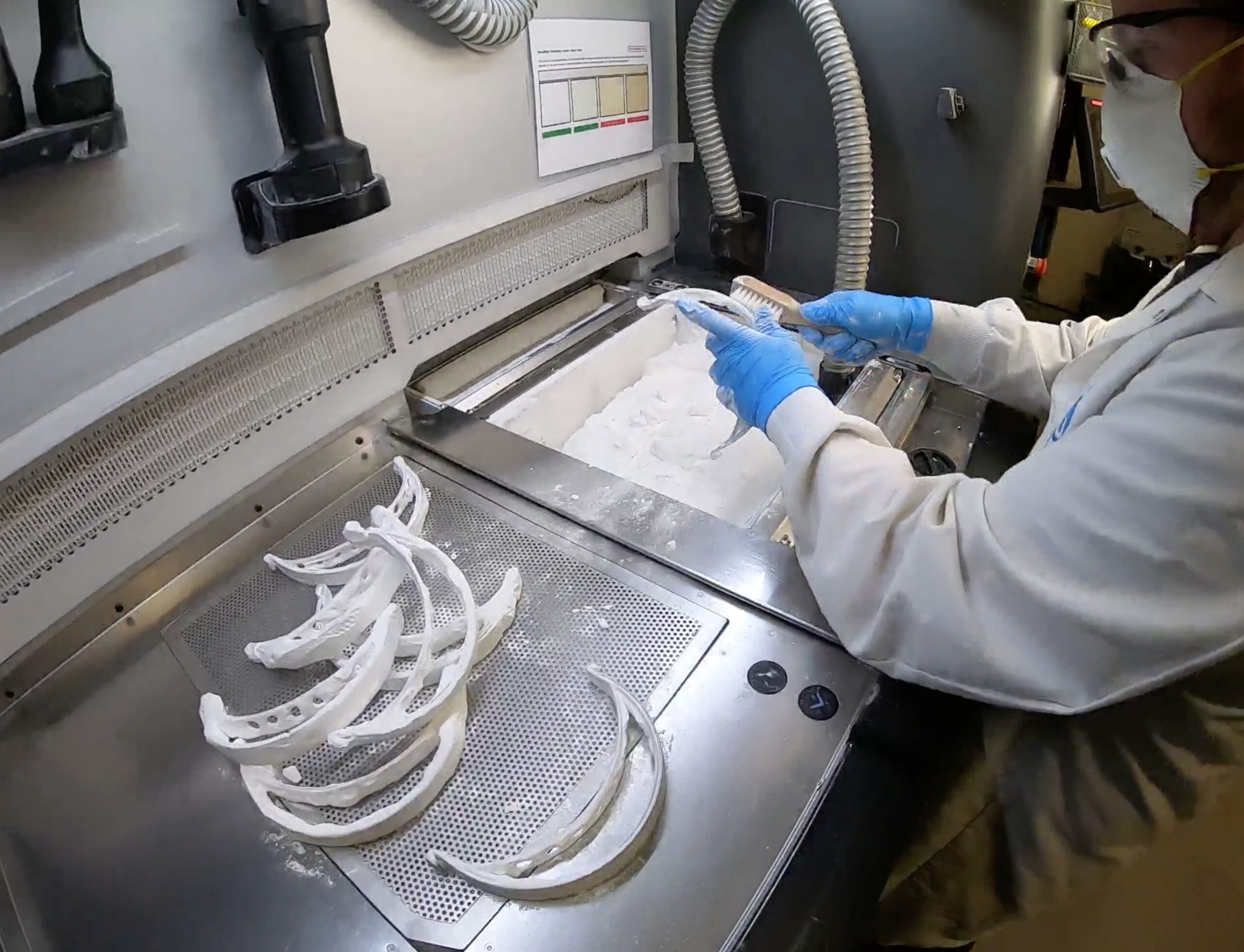
The Results
High-quality, reusable face shields at a competitive price
3 days
from initial concept to production-ready CAD model
55%
decrease in production cost
8x
increase in production capacity
Ready to make your parts with Fast Radius?
Making more precise medical treatment possible

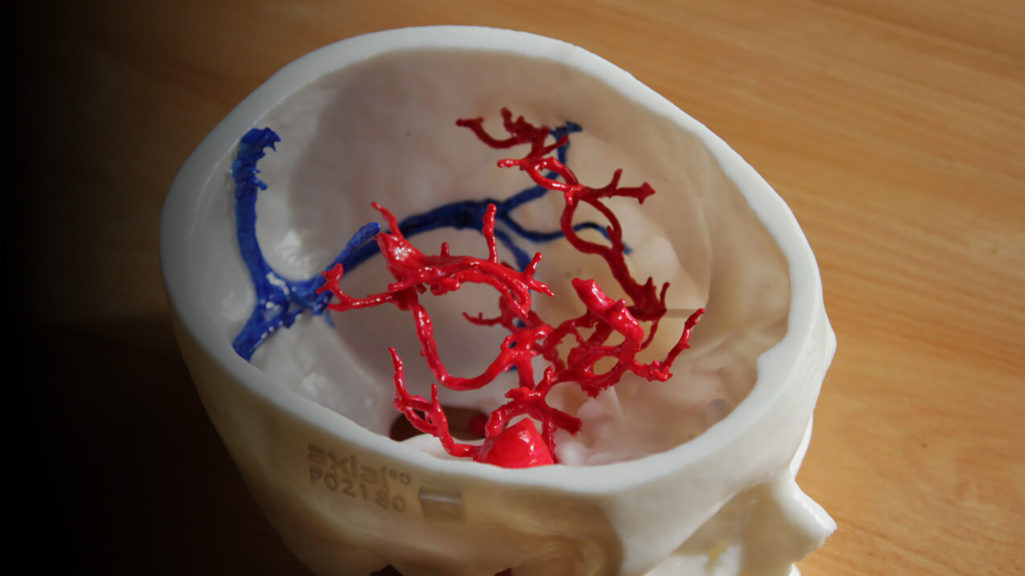
Axial3D needed to find a partner to produce its surgical models, at scale, with the speed required by surgeons. Fast Radius made repeatable, precise production possible with additive manufacturing to deliver models within just 72 hours.
THE CHALLENGE
Transforming how surgeons prepare for complex operations
When Axial3D wanted to expand into North America, they needed a partner who could produce their models with the same clinical specifications, at high volumes, and in line with the speed required by today’s medical community.
Axial3D is a medical technology firm based in Northern Ireland working to transform surgical planning through the use of patient-specific 3D anatomical models. Surgeons and medical professionals send patient files — like CT scans and MRIs — to Axial3D, who use their cloud-hosted software, driven by state-of-the-art algorithms, to convert the scanned images into a ready-for-print file in under one hour.
The 3D file is printed and delivered to the surgeons, who then use the model to prepare cardiovascular, orthopaedic, trauma, neurological, and other invasive surgeries. This approach to surgical planning leads to shorter pre-operative cycles, more efficient surgeries, and faster recovery times for patients.
Axial3D identified Fast Radius as the perfect innovation partner because of their technology-agnostic approach to manufacturing and ability to quickly reach customers across the United States.
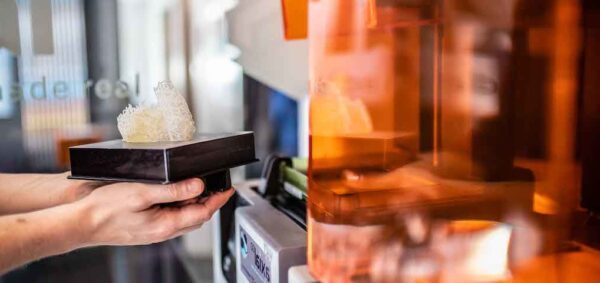
The partnership between Fast Radius and Axial3D comes at a critical time for healthcare institutions. We are now able to support surgeons and hospitals in the US who are desperately trying to minimize the impact of COVID-19 on their business as they endeavor to rapidly address the elective surgery backlog.
MAKING IT POSSIBLE
Faster, more precise surgical planning
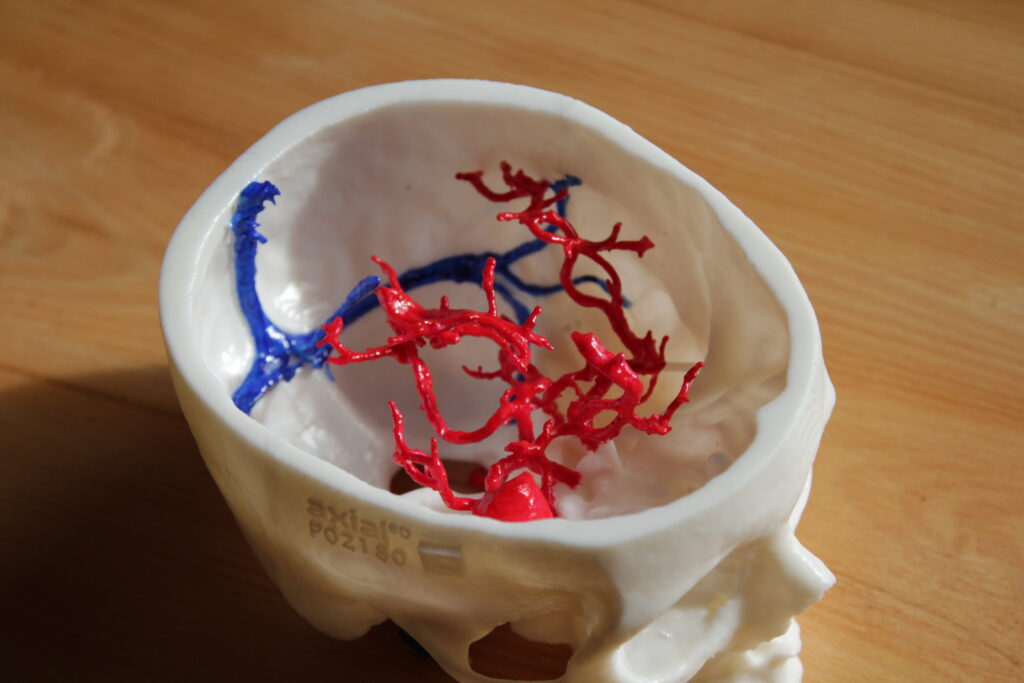
1. Precision accuracy
The models Axial3D makes need to meet strict requirements; any breaks, crevices, cavities, and other minute details must be accurate to the micro-millimeter, providing doctors with otherwise unavailable patient insights. Rather than relying on 2D imaging to work out the spatial distance between key areas of anatomy, surgeons find it faster and more reliable to request a 3D model created from their patient scans. Fast Radius’s array of printer technologies meets Axial3D’s ultimate requirements, ensuring hyper-accuracy and a full spectrum of color options to bring unprecedented detail to surgical planning.
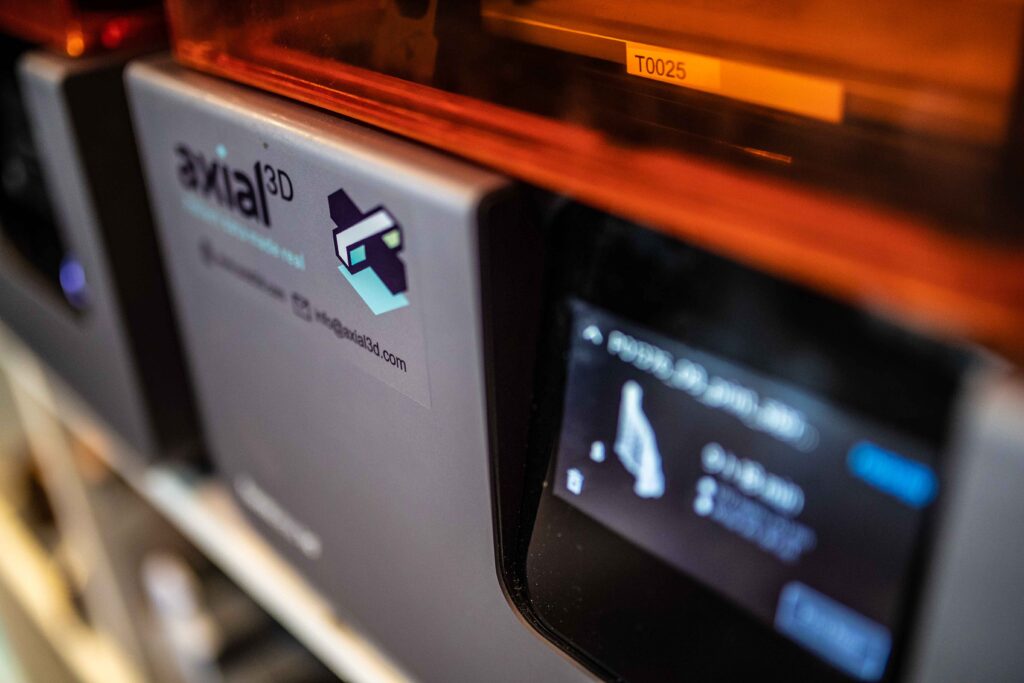
2. The right technology
Extensive additive manufacturing capabilities — from Carbon Digital Light Synthesis (DLS) to HP MultiJet Fusion (MJF) and Formlabs SLA — meant Axial3D could come to Fast Radius to find the best solution for its customers’ wide spectrum of needs. When supplying models across a number of healthcare disciplines, it’s not just accuracy that matters; form factor, material, and finishing options are critical to a successful model. Fast Radius has the ability to print the pliable hearts preferred by cardiovascular surgeons, colorful knees used by orthopedic surgeons, and translucent kidneys critical to preoperative renal surgery planning.
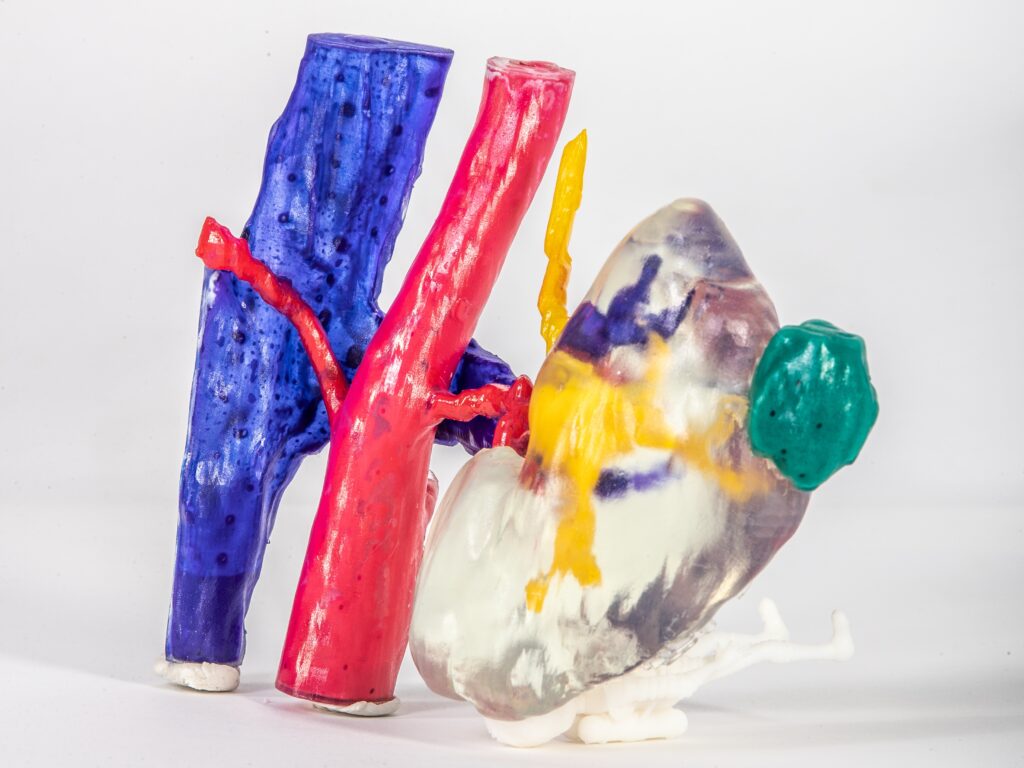
3. Powerful insights
Fifty percent of surgeons who use Axial3D’s models claim to have changed their plans for surgery as a result. Where 2D scans fail to catch subtleties like hidden crevices and small growths, Axial3D’s models printed by Fast Radius bring them to life, empowering surgeons with greater confidence when planning complex surgeries. In the case of one patient — a newborn baby with a double outlet right ventricle (DORV) and ventricular septal defect (VSD) — the surgeon found it almost impossible to identify the scale of the problem using 2D images alone; they couldn’t capture the angles and precise location of the VSD. But with one of Axial3D’s models on his desk two days later, he identified a second VSD and defined a plan to correct the two VSDs with one surgery, removing the need for a secondary procedure entirely.

4. Flexible fulfillment
Fast Radius can print and fulfill model orders in just 72 hours, enabling the speed required for pre-operative planning. Surgeons send their patient data to Axial3D, who then populate the print file and send directly to Fast Radius for production. Files are printed on-demand at Fast Radius’s factory in Chicago, and shipped in under three days to surgeons through a fulfillment partnership with UPS. Together, Fast Radius and Axial3D will print anatomical models to support the planning for hundreds of complex surgeries each month.
THE RESULTS
Fast Radius and Axial3D are making the surgical decision-making process faster and more precise.
50%
of surgeons change their pre-operative plans when using an Axial3D model
62 minutes
saved on average per case when a 3D model is used in planning for a procedure
16%
reduction in recovery times when a patient-specific model is used in treatment
Gallery

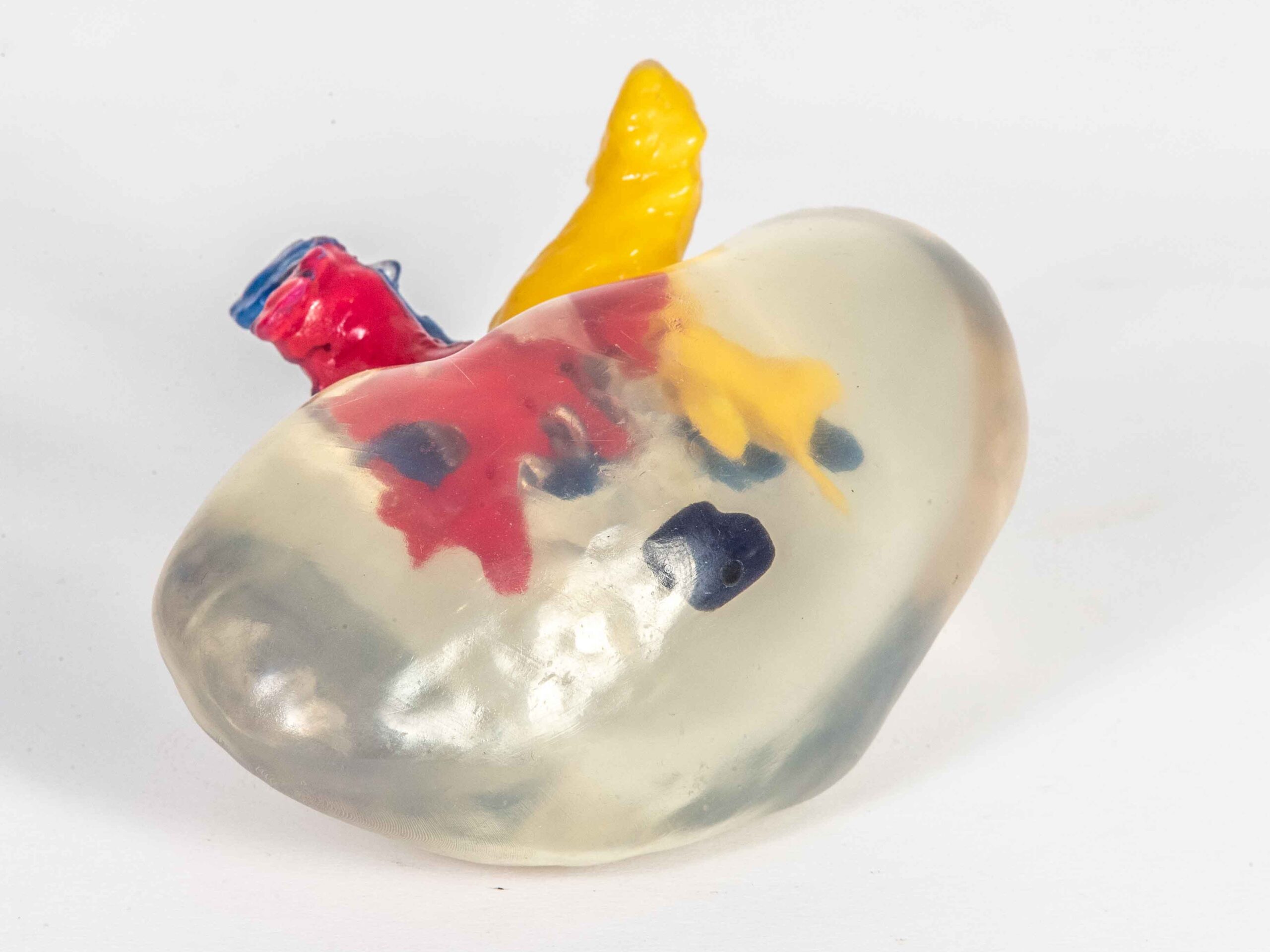
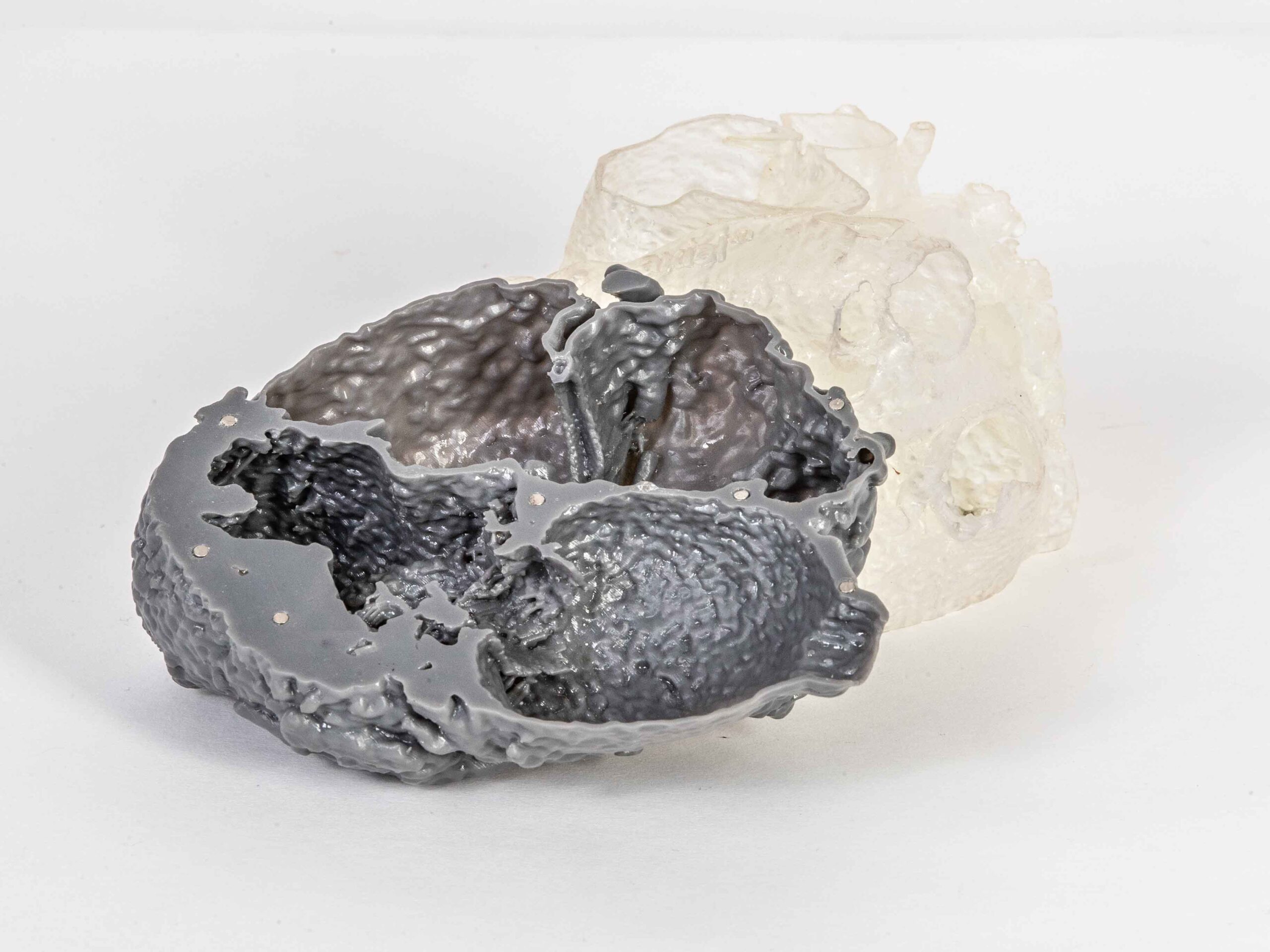
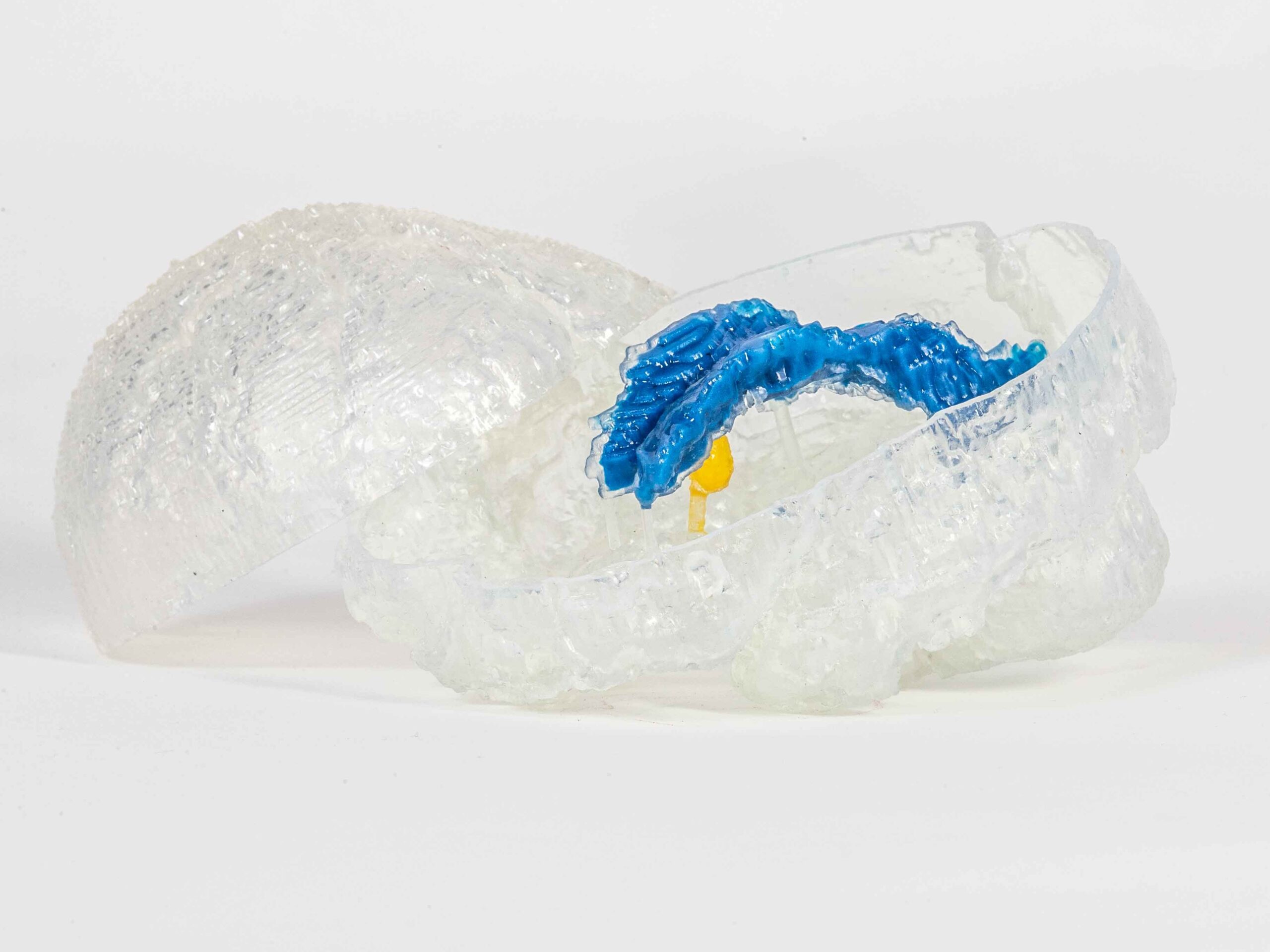
Ready to make your parts with Fast Radius?
Making controlled movement possible

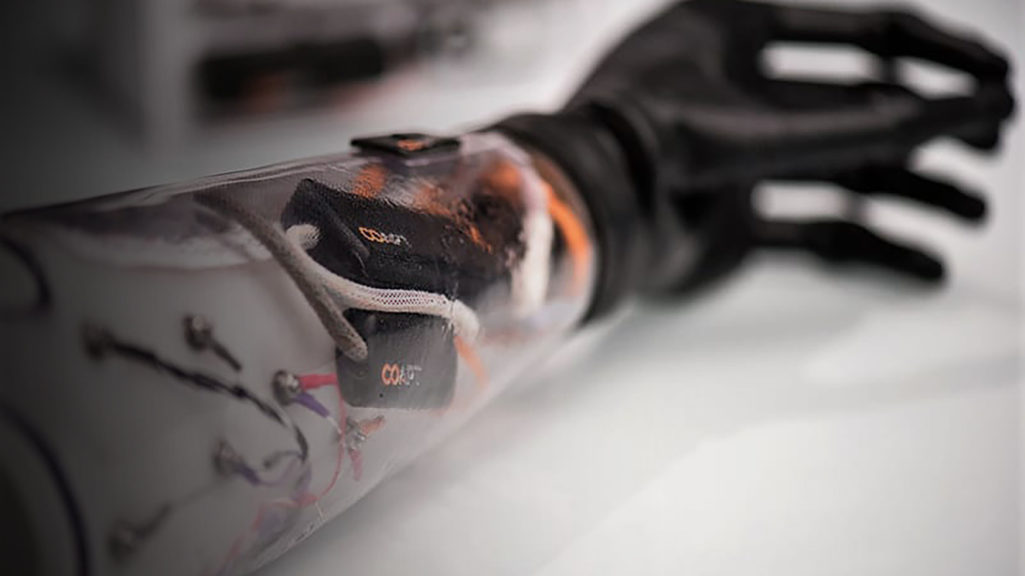
Coapt needed help bringing its next-generation prosthetic arm to life under a tight deadline. Fast Radius optimized 36 unique part designs for efficient additive manufacturing.
THE CHALLENGE
Producing the next generation of prosthesis components in record time
Coapt wanted to make movement second nature with a completely redesigned, innovative medical device.
Coapt is a Chicago-based company that produces myoelectric pattern recognition systems for upper limb prostheses. The Coapt COMPLETE CONTROL system enables people who have lost their upper limbs to fully control movement in their prosthetic arms. It does so through an electrical pattern recognition system that captures coordinated muscle signals sent through the brain, decodes the patterns in real time and translates them into the wearer’s intended movement – such as picking up an object or waving a hand.
In 2018, Coapt gathered enough optimization feedback to begin production on the second generation of COMPLETE CONTROL. This meant retooling the system’s software and redesigning the hardware components. Fast Radius’s innovative manufacturing processes could design and deliver the product in record time.
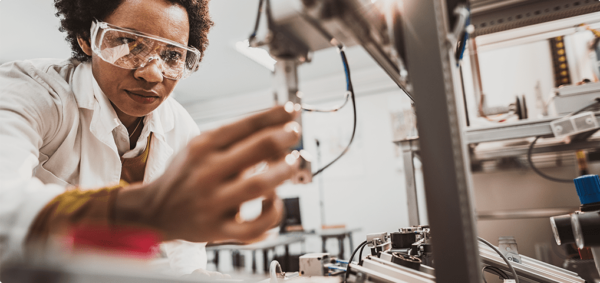
Fast Radius helped us understand all of the additive technologies and materials that were available to us for this project. They guided us in the right direction based on our requirements and were able to give us feedback on how to improve our designs for 3D printing.

MAKING IT POSSIBLE
Rapid prototyping and development

1. Redesign for additive
There were many parts that Coapt wanted to test and make differently in the next wave of COMPLETE CONTROL. And it wasn’t just the geometries that Coapt wanted to iterate, it was also the textures and aesthetics of the parts. With so many variables to consider, injection molding just didn’t make sense — Coapt needed a partner like Fast Radius to redesign several parts of COMPLETE CONTROL. Luckily, Fast Radius provides expert engineering to support additive processes, specifically Carbon® Digital Light Synthesis (DLS) and HP Multi Jet Fusion (MJF).
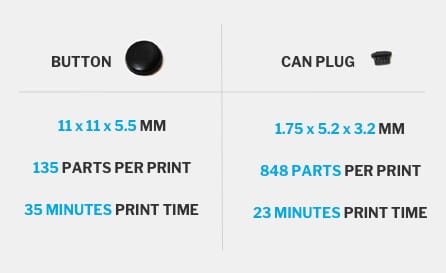
2. Creating small parts at scale
Nearly a dozen core components make up the second generation of COMPLETE CONTROL, each manufactured using the most efficient process for that part. Two of those parts are the calibration button and can plugs. Because of their size and aesthetic requirements, both are manufactured using Carbon® DLS technology and EPU 40 material.
3. Meeting low volume production needs
Coapt chose to make one more critical part using additive manufacturing: The fabrication dummy, a part that the prosthetist uses to ensure that the electronic circuit board housing fits correctly within the wearer’s prosthetic. This part is made using PA 12 material with HP MJF technology – a perfect fit based on the part’s need for rigidity and light weight.
4. Rapid iteration
Over 12 weeks, Fast Radius printed 36 unique designs yielding 195 parts for the Coapt team to test and evaluate. Instead of investing in on-site 3D printing technology for prototyping, Coapt tapped into Fast Radius’s technology infrastructure to make rapid iterations as needed.
THE RESULTS
A strategic manufacturing partnership – from design optimization, to prototyping, all the way to production
195
parts manufactured and evaluated
36
unique designs printed in 12 weeks
983
parts per printed in 58 minutes using Carbon®Digital Light Synthesis®
Gallery
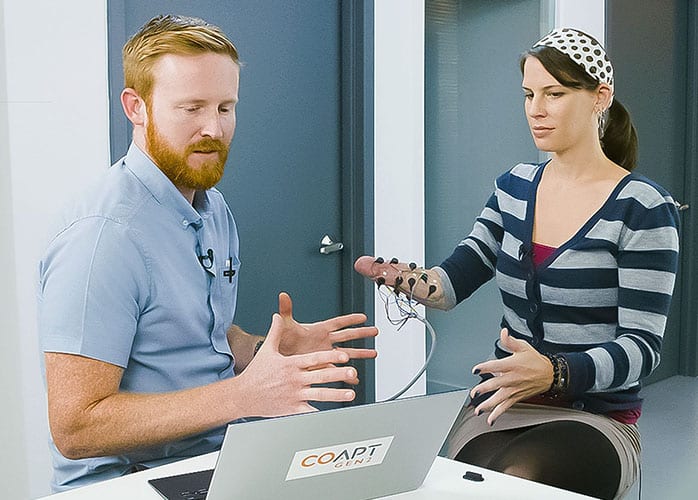
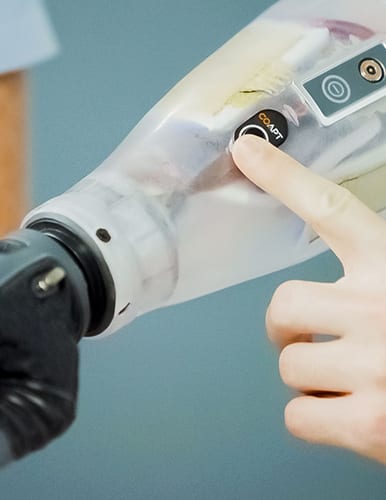

 Back
Back

